Our Latest Works



Wazirx
WazirX is India’s most trusted bitcoin & cryptocurrency exchange and is available on all platforms – Web, Android & iOS. With WazirX, you can Buy, Sell & Trade digital currencies with amazing ease, confidence, and trust.
Industry
Crypto Currency
Location
Mumbai
Reliance Met
MET, a Reliance subsidiary Integrated Industrial Township strategically located at the border of Delhi/Gurgaon with strong connectivity in Jhajjar, Haryana.
Industry
Real Estate
Location
Haryana
More Projects
- All Post
- Agriculture
- Blog
- Branding & logo design
- Brochure
- Corporate Website
- Creatives
- Digital Marketing
- Ecommerce Development
- Ed Tech
- Fashion
- Featured Works
- Fintech
- IT
- Manufacturing
- Marketing
- Posted Design
- Real Estate
- Service
- UI / UX Design

In today’s dynamic marketplace, maintaining a strong and relevant brand identity is crucial for businesses of all sizes. However, over…
In today's dynamic marketplace, maintaining a strong and relevant brand identity is crucial for businesses of all sizes. However, over time, brands can become outdated, lose their connection with the target audience, or fail to reflect the company's evolution. This is where rebranding comes into play.
What is the Rebranding Strategy?
Essentially, rebranding is a comprehensive strategy that involves repositioning a brand in the market. It's not just about a new logo or tagline; it's about revamping the entire brand experience to better align with your current goals, target audience, and market landscape.
There are different types of rebranding, depending on the extent of change desired. Evolutionary rebranding involves making minor adjustments to the existing brand identity, such as refining the logo or messaging. Revolutionary rebranding, on the other hand, is a complete overhaul, encompassing everything from the brand name and visual elements to the core values and messaging.

The goals of rebranding can be diverse, including:
- Enhancing brand awareness and recognition.
- Attracting new customers and expanding market reach.
- Reflecting changes in the company's mission, vision, or values.
- Differentiating from competitors and establishing a unique brand proposition.
How Do You Revamp a Brand Identity?
A successful rebranding strategy requires careful planning and execution. Here are the key steps involved:
1. Conduct Market Research:
- Understand your target audience: Analyze their demographics, needs, and expectations.
- Conduct competitor analysis: Identify your competitors' strengths and weaknesses, and how your brand can differentiate itself.
- Evaluate brand perception: Assess how your current brand is perceived by your target audience and stakeholders.
2. Define Brand Values and Mission:
- Establish your core values: These are the fundamental principles that guide your company's actions and decision-making.
- Craft a clear and concise mission statement: This statement should articulate your company's purpose and what it strives to achieve.
3. Develop a New Brand Identity:
- Create a unique visual identity: This includes designing a new logo, color palette, typography, and other visual elements that are consistent and memorable.
- Develop compelling brand messaging: Craft clear, concise, and persuasive messaging that resonates with your target audience and effectively communicates your brand's value proposition.
4. Implement the Rebranding Across All Touchpoints:
- Update your website, marketing materials, packaging, and social media presence.
- Ensure consistency across all communication channels.
- Communicate the rebranding to your employees, partners, and customers.
5. Monitor and Measure Results:
- Track key metrics such as brand awareness, website traffic, customer engagement, and sales.
- Analyze the results to assess the effectiveness of the rebranding efforts and make necessary adjustments.
Key Elements of Rebranding:
For a rebranding strategy to be successful, it must incorporate several crucial elements:
- Clarity: The brand message should be clear, concise, and easily understood by the target audience.
- Consistency: Maintaining a consistent brand image across all platforms is essential for building brand recognition and trust.
- Differentiation: A strong brand stands out from the competition and offers a unique value proposition.
- Customer Focus: Understanding and catering to the needs and expectations of your target audience is paramount for building lasting relationships.

Conclusion
In today's competitive landscape, rebranding can be a powerful tool for businesses looking to revitalize their brand identity, reconnect with their target audience, and achieve their growth objectives. By following a strategic approach and focusing on the key elements mentioned above, businesses can successfully navigate the rebranding process and emerge with a stronger, more relevant brand that resonates with their target audience and drives long-term success.
Considering a rebranding effort for your business? Webchirpy offers comprehensive rebranding services to help you develop a strong and impactful brand identity that reflects your unique value proposition and resonates with your target audience. From logo design and messaging development to website creation and marketing materials, our team of experienced professionals can guide you through every step of the rebranding process.

Landing pages, specifically designed web pages tailored to targeted audiences. When effectively combined with Google Ads, these pages can significantly…
Landing pages, specifically designed web pages tailored to targeted audiences. When effectively combined with Google Ads, these pages can significantly boost your reach and ultimately drive conversions.
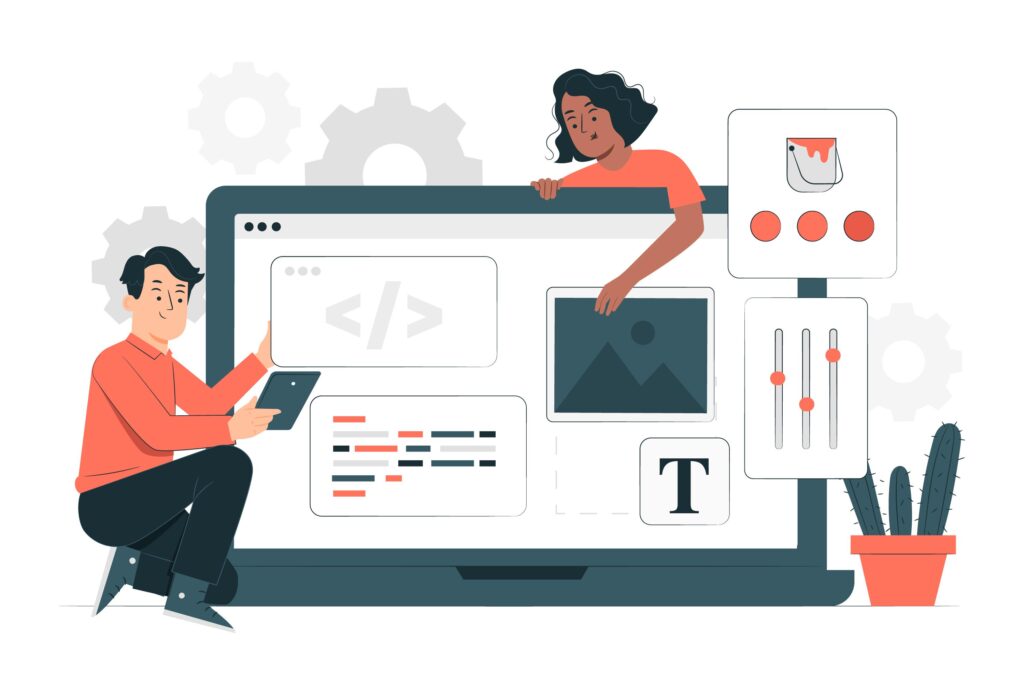
Crafting Compelling Landing Pages
1. Align with Google Ads: Ensure your landing page content directly reflects the promises made in your Google Ads. This creates a seamless user experience, fostering trust and increasing the likelihood of conversion. Remember, relevance is key.
2. Headline that Hooks: Your headline is the first impression, so make it count. Craft a clear, concise, and benefit-driven headline that captures attention and accurately reflects the value proposition. Utilize strong verbs and highlight the unique selling points of your offering.
3. Compelling Copy that Converts: Beyond the headline, your landing page copy should be persuasive and informative. Explain the benefits of your product or service in a clear and concise manner, addressing the specific needs and pain points of your target audience. Use bullet points, short paragraphs, and visuals to break up text and enhance readability.
4. Visual Appeal: High-quality visuals, such as images and videos, can significantly enhance the impact of your landing page. Choose visuals that are relevant to your offering and resonate with your target audience. They should complement your copy and reinforce your message.
5. Clear Call to Action (CTA): Tell your visitors what you want them to do next. Whether it's signing up for a free trial, making a purchase, or downloading an ebook, your CTA should be prominent, actionable, and easy to understand. Use strong verbs and contrasting colors to make it stand out.
Optimizing for Conversions
1. Mobile-friendliness: With the increasing dominance of mobile browsing, ensuring your landing page is optimized for all devices is paramount. This includes responsive design, fast loading times, and clear, easy-to-click CTA buttons.
2. A/B Testing: Don't be afraid to experiment! A/B testing different elements of your landing page, such as headlines, visuals, and CTA positioning, can help you identify the most effective combination for driving conversions.
3. Social Proof: Leverage the power of social proof to build trust and credibility. Include customer testimonials, case studies, or client logos on your landing page to demonstrate the value you deliver.
4. Remove Distractions: Keep your landing page focused on the singular goal of conversion. Avoid unnecessary navigation elements, intrusive pop-ups, or irrelevant information that might distract visitors from taking the desired action.
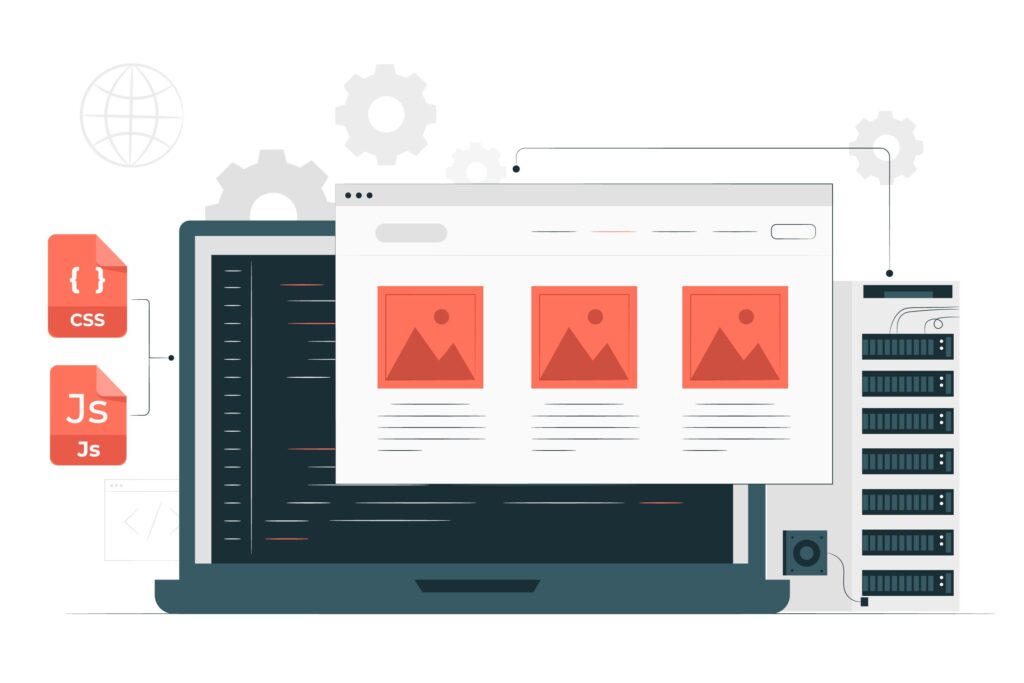
Enhancing Landing Page Experience in Google Ads
1. Quality Score: Google Ads assigns a Quality Score to your keywords and landing pages, which directly impacts your ad ranking and cost-per-click. Ensure your landing page content aligns with your ad copy and keywords to achieve a high-Quality Score, benefiting from improved ad visibility and potentially lower costs.
2. Ad Extensions: Utilize ad extensions to provide additional information and functionalities within your Google Ads, such as location extensions, call extensions, or site link extensions. This can enhance the user experience and encourage clicks.
3. Landing Page Relevance: Google prioritizes user experience. When a user clicks on your ad, they expect to land on a page directly relevant to the advertised product or service. Maintaining this relevance improves your campaign performance and user satisfaction.
Investing in Expertise
Building high-performing landing pages and managing effective Google Ads campaigns requires expertise and ongoing optimization. Partnering with a professional service provider like Webchirpy can ensure your campaigns are strategically crafted, meticulously managed, and continuously optimized for maximum impact.
Our team of specialists possesses the necessary skills and experience to create compelling landing pages, develop targeted Google Ads campaigns, and deliver measurable results, ultimately helping you attract more customers and achieve your business goals.
Contact us today to discuss your specific needs and explore how our expertise can help you leverage the power of landing pages and Google Ads to achieve remarkable results.

In today’s competitive business landscape, a well-designed logo is essential for establishing brand identity and making a lasting impression on…
In today's competitive business landscape, a well-designed logo is essential for establishing brand identity and making a lasting impression on your target audience. But how does a simple image become the visual embodiment of your company's values and aspirations? Let's delve into the fascinating logo design process, from the initial spark of an idea to the final polished product.

Understanding the Brand: The Foundation of a Successful Logo
Before embarking on the innovation journey, it's crucial to gain a deep understanding of the brand you're representing. This initial phase involves:
- Client discovery: Engaging in open communication with the client to grasp their vision, target audience, brand personality, and desired message.
- Competitive analysis: Research competitors within the industry to identify design trends and potential areas for differentiation.
- Defining brand values: Uncovering the core values and mission that the logo should communicate.
This initial groundwork establishes a solid foundation for the design direction and ensures the final logo resonates with the brand's essence.
Brainstorming and Sketching: Bringing Ideas to Life
With a clear understanding of the brand, the creative process begins. This stage often involves:
- Brainstorming sessions: Generating a multitude of logo concepts through individual or collaborative exercises. Exploring different styles, fonts, and color palettes to spark creative possibilities.
- Sketching: Translating those ideas into rough sketches, allowing for quick exploration and iteration without getting bogged down in technical details.
This is a crucial phase where various options are explored and refined, eventually leading to a selection of promising concepts for further development.
Refining and Digitalization: Transforming Ideas into Reality
Once promising logo concepts are identified, it's time to refine them and bring them to life digitally:
- Vector Software: Utilizing design software like Adobe Illustrator to create digital versions of the chosen logo concepts, allowing for precise adjustments and scalability.
- Color exploration: Experiment with different color combinations to ensure the logo evokes the desired emotions and aligns with the brand's identity.
- Typography selection: Choosing fonts that complement the logo's design and effectively communicate the brand's message.
This stage involves meticulous attention to detail, ensuring the logo is visually appealing, technically sound, and adaptable to various applications.
Presentation and Feedback: Collaborative Refinement
The next step involves presenting the developed logo options to the client for their feedback and approval. This stage typically involves:
- Client presentation: Clearly showcasing the different logo options, explaining the design rationale behind each, and addressing any initial questions or concerns.
- Incorporating feedback: Carefully considering the client's feedback and making necessary adjustments to refine the chosen logo concept.
Open communication and collaboration during this phase are crucial for ensuring the final logo meets the client's expectations and effectively represents the brand.
Finalization and Delivery: The Culmination of the Design Journey
Once the final logo is approved, it's time to prepare it for various applications:
- Delivering various file formats: Providing the logo in different file formats (e.g., PNG, JPG, SVG) to ensure it can be used across various platforms and media.
- Creating a style guide: Develop a style guide that outlines the logo's proper usage, including color specifications, font variations, and any specific usage guidelines.
This final stage ensures the logo is delivered in a usable format and provides clear instructions for consistent brand representation across all marketing materials.

Partnering with Webchirpy for Exceptional Logo Design
Creating a truly impactful logo requires expertise, creativity, and a deep understanding of brand identity. Webchirpy's team of experienced designers possesses the skills and passion to guide you through every step of the logo design process, from initial concept development to final delivery.
Webchirpy's logo design service offers a collaborative and personalized approach, ensuring your brand receives a unique and memorable visual identity that resonates with your target audience and effectively communicates your brand's essence.
Contact us today and embark on a journey to create a logo that will become the cornerstone of your brand's success.

To achieve success, you need a strategic marketing plan that effectively reaches your target audience and drives downloads. This comprehensive…
To achieve success, you need a strategic marketing plan that effectively reaches your target audience and drives downloads. This comprehensive guide will equip you with the knowledge and actionable steps to propel your mobile app towards visibility and user acquisition.

Defining Your Target Audience: The Foundation of Success
Before diving into marketing tactics, it's crucial to understand who your ideal users are. This involves creating a detailed user persona that outlines their demographics, interests, pain points, and tech-savviness. Conducting thorough market research, analyzing user data, and even gathering feedback through surveys and focus groups can be invaluable in building this persona.
For instance, if your app caters to fitness enthusiasts, your target audience might be individuals aged 25-45 who are interested in health and wellness. They might be active on social media platforms like Instagram and subscribe to fitness blogs or podcasts. Understanding these characteristics allows you to tailor your marketing messages and channels accordingly.
Crafting a Compelling App Store Listing: Your First Impression
Your app store listing serves as the digital storefront for your app, making it the first point of contact with potential users. Optimizing this listing is essential to increase discoverability and encourage downloads. Here are some key elements to focus on:
- Captivating Title: Choose a concise and descriptive title that accurately reflects your app's purpose and value proposition.
- Engaging Description: Highlight the key features and benefits of your app, addressing the specific needs and pain points of your target audience. Utilize relevant keywords to improve search ranking.
- Visually Appealing Screenshots and Videos: Showcase the app's interface and functionality through high-quality screenshots and engaging videos.
Remember, a well-crafted app store listing can significantly impact your download rate. Invest time and effort in creating a listing that effectively communicates the value your app offers.
Leveraging Powerful Marketing Channels: Reaching the Right Audience
With a defined target audience and optimized app store listing, it's time to explore various marketing channels to reach them effectively. Here are some key strategies to consider:
- Social Media Marketing: Utilize platforms frequented by your target audience to share engaging content, promote app features, and run targeted ad campaigns.
- Content Marketing: Create informative blog posts, articles, or videos that address the problems your app solves and establish yourself as a thought leader in your industry.
- App Store Optimization (ASO): Implement keyword research and optimization strategies to improve your app's ranking in relevant app store searches.
- Influencer Marketing: Partner with relevant influencers in your niche to promote your app to their audience through reviews, tutorials, or sponsored content.
Additionally, consider exploring paid advertising options like search engine marketing (SEM) or app install campaigns to reach a wider audience.
Encouraging Downloads: The Final Push
Once potential users discover your app, enticing them to download it becomes crucial. Here are some effective strategies:
- Offer Incentives: Provide limited-time discounts, bonus features, or exclusive content for new users who download the app.
- Run Contests and Giveaways: Generate excitement and encourage downloads by hosting contests or giveaways centered around your app.
- Utilize Call-to-Action Buttons: Include clear and compelling call-to-action buttons on your website, social media posts, and marketing materials, directing users to download the app.
Furthermore, encourages existing users to become advocates by implementing referral programs or social sharing features within the app.
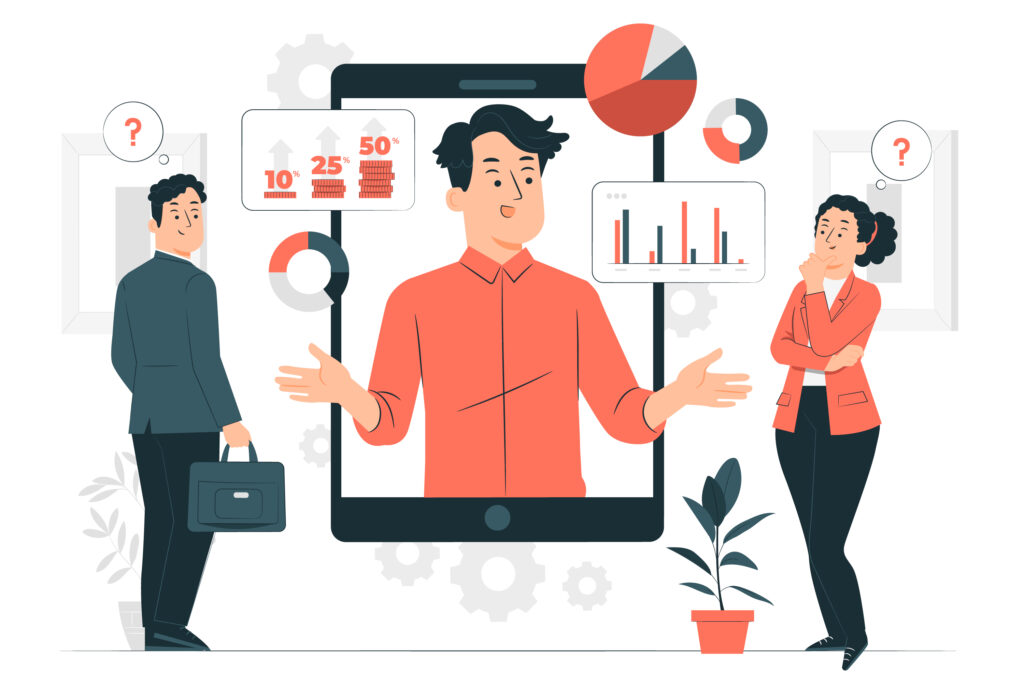
Building a Sustainable Marketing Plan: Beyond Downloads
While driving downloads is crucial, retention is equally important for long-term success. Develop a comprehensive marketing plan that extends beyond the initial launch phase and focuses on user engagement and retention. This may involve:
- Regularly Updating Your App: Address user feedback, fix bugs, and introduce new features to keep users engaged.
- Personalized Communication: Utilize in-app messaging or email marketing to send targeted communication based on user behavior and preferences.
- Community Building: Foster a sense of community around your app by creating online forums or hosting events for users to interact and share experiences.
By implementing these strategies, you can create a sustainable marketing plan that drives not only downloads but also loyal users who contribute to the long-term success of your mobile app.
Conclusion
Marketing your mobile app effectively requires a multi-faceted approach that combines audience understanding, strategic outreach, and continuous engagement. By following the steps outlined above and adapting them to your specific app and target audience, you can navigate the competitive mobile landscape and achieve sustainable growth for your app.
If you're considering developing a mobile app, consider partnering with a professional mobile app development and marketing service like Webchirpy.
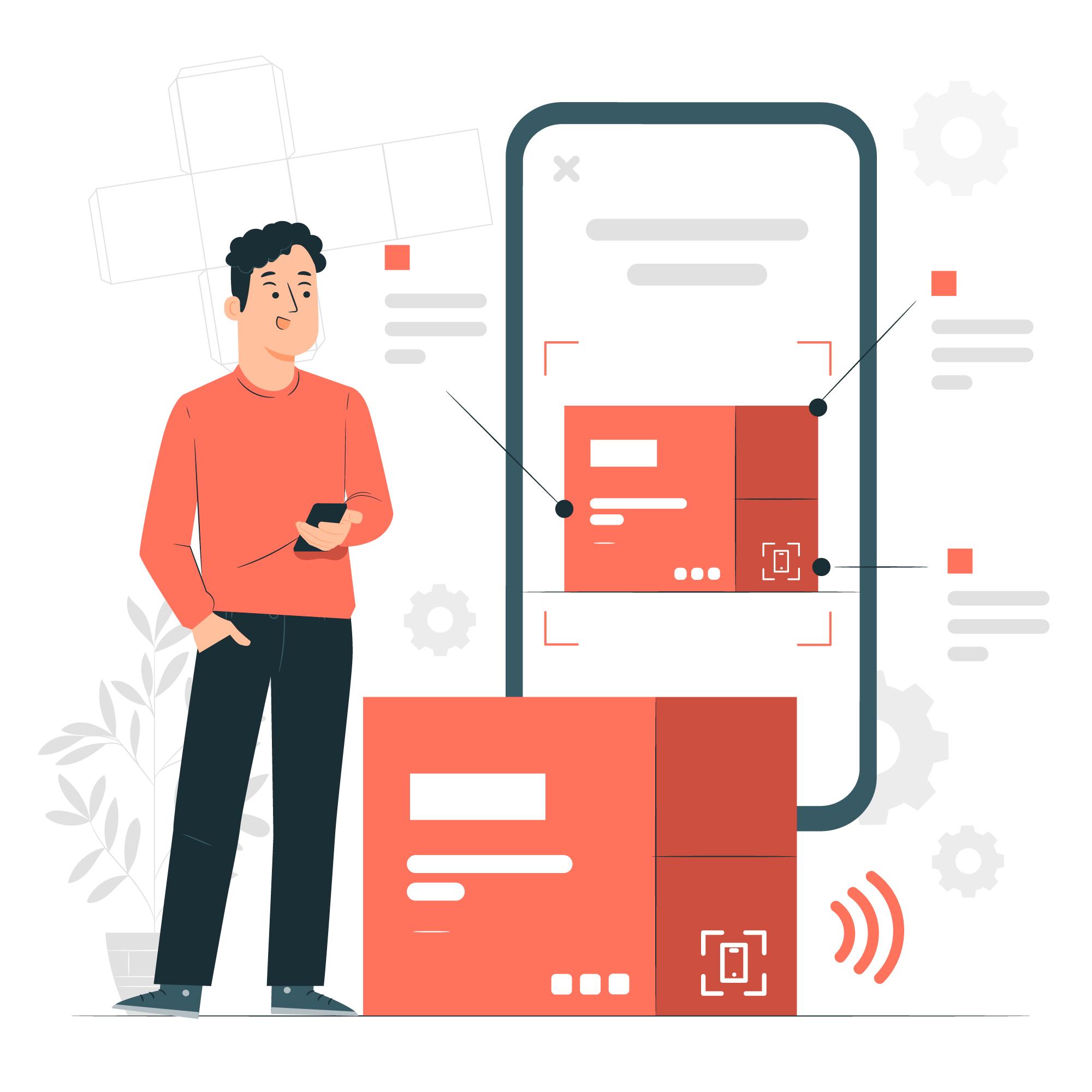
Packaging, often considered a silent salesperson, plays a vital role in capturing consumer attention and influencing purchasing decisions. But how…
Packaging, often considered a silent salesperson, plays a vital role in capturing consumer attention and influencing purchasing decisions. But how can you ensure your packaging design ignites creativity and effectively conveys your brand message? This blog post delves into the essential elements of print and packaging design, guiding you through the key considerations and strategies to create packaging that resonates with your target audience.
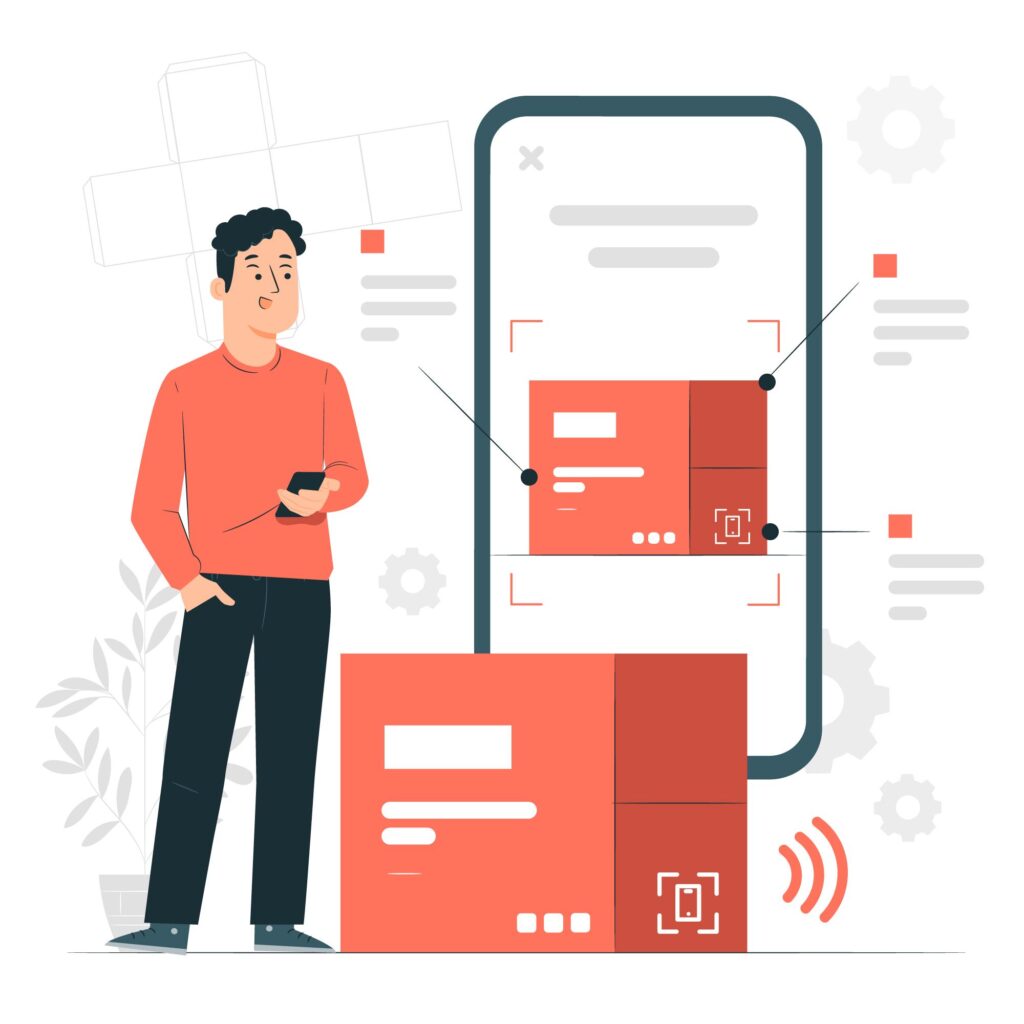
The Building Blocks of Effective Packaging Design
Packaging design encompasses various components that work together to create a cohesive and impactful experience. Here's a breakdown of the fundamental elements:
- Visual Identity: This includes your brand logo, color palette, typography, and any visual elements that represent your brand. Maintaining consistency across all packaging elements reinforces brand recognition and builds trust with consumers.
- Information Hierarchy: Clearly communicate essential product information, such as brand name, product description, ingredients, and nutritional facts, using a well-organized layout and easy-to-read fonts.
- Functionality: Packaging should not only be aesthetically pleasing but also functional. Consider factors like ease of opening, storage requirements, and product protection during transportation.
- Sustainability: Consumers are increasingly conscious of environmental impact. Opting for eco-friendly materials, recyclable packaging, and minimal printing can enhance your brand image and resonate with environmentally responsible consumers.
4 Key Considerations for Captivating Packaging Design
While aesthetics play a significant role, successful packaging design goes beyond visual appeal. Here are four crucial considerations to keep in mind:
- Target Audience: Understanding your target audience's demographics, preferences, and purchasing behaviors is essential. Tailor your design elements, including color schemes, imagery, and messaging, to resonate with their specific needs and expectations.
- Brand Identity: Your packaging should seamlessly integrate with your overall brand identity. This ensures consistency across all marketing channels and strengthens brand recognition. Consider how the design elements on your packaging complement your brand logo, website, and marketing materials.
- Product Positioning: Clearly communicate the unique selling proposition (USP) of your product through your packaging design. Highlight what sets your product apart from competitors and emphasize its key benefits and features.
- Shelf Appeal: In a crowded retail environment, your packaging needs to grab attention quickly. Utilize bold colors, captivating visuals, and strategic placement of key information to make your product stand out on store shelves.
Elements that Spark Allure: Making Your Packaging Irresistible
Beyond functionality and information, incorporating design elements that evoke emotions and trigger purchase decisions can elevate your packaging to the next level. Here are some tactics to consider:
- Storytelling: Use visuals and messaging that tell a story about your brand or product. This can connect with consumers on an emotional level and create a memorable brand experience.
- Sensory Appeal: Engage multiple senses by incorporating textures, finishes, or even scents (if appropriate) to create a unique and interactive experience for consumers.
- Minimalism: Sometimes, less is more. A clean and minimalist design can exude sophistication and allow your product to take center stage.
- Surprise and Delight: Incorporate unexpected elements, such as hidden compartments, interactive features, or playful graphics, to surprise and delight consumers, fostering brand loyalty and positive word-of-mouth.
Remember, effective packaging design is a strategic blend of functionality, aesthetics, and emotional connection. By carefully considering these elements and tailoring your design to your target audience and brand identity, you can unlock the creative potential of your packaging and create a powerful tool that drives sales and strengthens your brand presence.
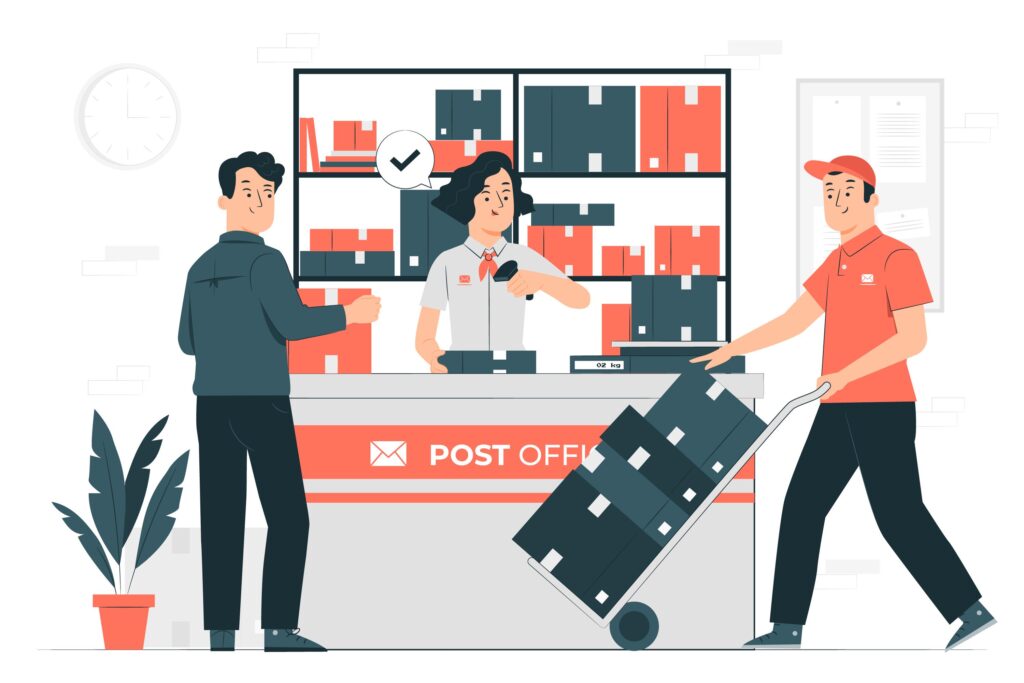
Elevate Your Brand with Professional Print and Packaging Design
Creating impactful and visually stunning packaging requires expertise and an understanding of design principles. Webchirpy offers comprehensive print and packaging design services to help you bring your creative vision to life. Our team of experienced designers will collaborate with you to develop packaging solutions that not only showcase your product but also effectively communicate your brand story and resonate with your target audience.
Contact us today and unlock the full potential of your brand through captivating and effective print and packaging design.

In today’s digital landscape, user experience (UX) reigns supreme. Websites and applications that are intuitive, efficient, and enjoyable to navigate…
In today's digital landscape, user experience (UX) reigns supreme. Websites and applications that are intuitive, efficient, and enjoyable to navigate stand out from the crowd, fostering user engagement and driving conversions. A crucial element in achieving this is crafting compelling user flows.
What is a user flow?
A user flow is a visual representation of the steps a user takes to complete a specific task on your website or app. It maps out the user's journey, from entering the platform to achieving their desired outcome, such as making a purchase, signing up for a service, or finding specific information.

Why are they essential?
Effective user flows offer a multitude of benefits:
- Enhanced user experience: Clear and streamlined user flows guide users toward their goals effortlessly, minimizing frustration and confusion.
- Increased conversions: By removing roadblocks and optimizing the journey, user flows can significantly improve conversion rates.
- Improved website/app usability: They help identify and address potential usability issues, leading to a more intuitive and user-friendly platform.
- Better communication and collaboration: User flows provide a shared understanding of the user journey among stakeholders, facilitating better communication and collaboration during the design and development process.
How to create an effective user flow:
- Define your target audience and their goals: Understanding your users' needs and motivations is crucial. Who are you designing for? What are their goals when they visit your platform?
- Identify key user journeys: Map out the different paths users might take to achieve their goals. Focus on the most common and critical journeys.
- Break down each journey into steps: List each action a user takes, from entering the platform to completing the desired task.
- Visualize the flow: Use flowcharts, wireframes, or other visual tools to represent the user journey step-by-step.
- Iterate and test: Gather feedback from users and stakeholders, refine the user flow based on their insights, and conduct usability testing to ensure it functions as intended.
Crafting compelling user flows is an ongoing process that requires continuous refinement and improvement. By following these guidelines and prioritizing user needs, you can create a seamless and engaging user flow that drives success for your website or application.
Need help crafting exceptional user flows and optimizing your user experience?
Webchirpy's UI/UX design services can help you create intuitive and user-centric experiences that drive engagement and conversions. Our team of experienced designers will work closely with you to understand your unique needs and goals, developing user flows that streamline the user journey and deliver exceptional results.
Contact us today and let us help you craft user flows that captivate your audience and propel your business forward.
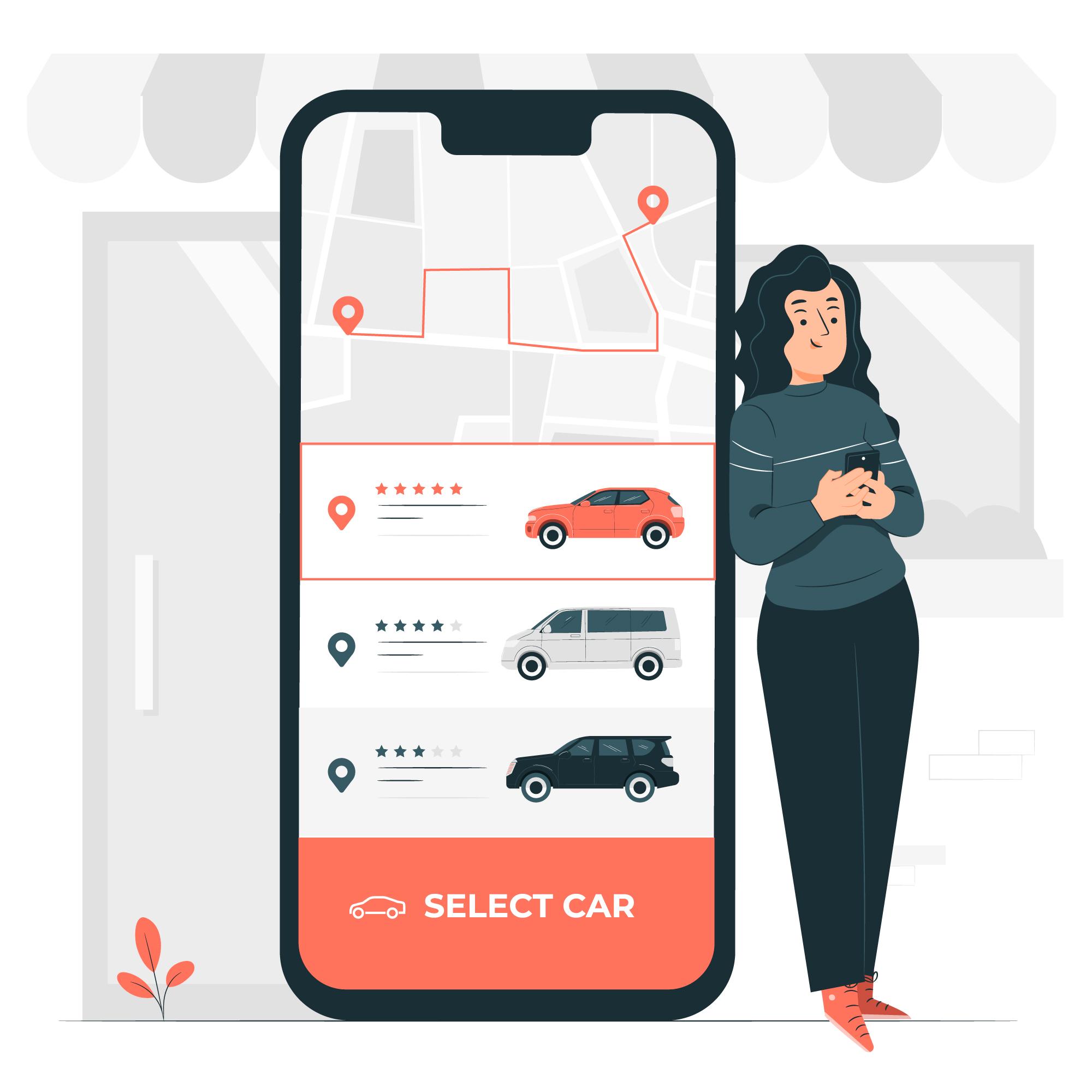
The rise of smartphones and tablets has fundamentally reshaped how we interact with the world around us. Mobile apps, once…
The rise of smartphones and tablets has fundamentally reshaped how we interact with the world around us. Mobile apps, once considered mere entertainment tools, have become an important facet of our lives – from ordering food and hailing rides to managing finances and accessing healthcare. This rapid evolution begs the question: how are they changing the world?

A Revolution in Every Pocket
Mobile apps have revolutionized the way we consume information and engage with services. Gone are the days of waiting in line or relying on bulky desktops. Today, with a few taps on our smartphones, we can:
- Access instant information: News, weather updates, and educational resources are readily available at our fingertips, fostering a more informed and connected society.
- Simplify daily tasks: From managing finances and booking appointments to grocery shopping and ordering food, apps streamline everyday activities, saving us time and effort.
- Enhance communication and collaboration: Messaging apps, social media platforms, and video conferencing tools connect us with friends, family, and colleagues across the globe, fostering stronger relationships and facilitating collaboration.
- Empower individuals and communities: Apps provide platforms for citizen journalism and fundraising campaigns, empowering individuals and communities to make a difference.
Mobile Technology: Reshaping the Business Landscape
The impact of mobile apps extends far beyond individual users, transforming the business landscape in several ways:
- Increased customer engagement: Businesses can leverage mobile apps to interact directly with customers, providing personalized experiences, loyalty programs, and real-time updates.
- Enhanced operational efficiency: Mobile apps can streamline internal processes, improve communication within teams, and facilitate data collection and analysis, leading to increased efficiency and productivity.
- New revenue streams: Mobile apps open doors to innovative business models, such as in-app purchases, subscription services, and location-based marketing, generating new revenue streams and expanding market reach.
- Improved brand awareness and marketing: They provide businesses with a powerful platform to showcase their brand, engage with potential customers, and launch targeted marketing campaigns.
By embracing mobile technology and developing user-friendly app, businesses can gain a competitive edge, build stronger customer relationships, and thrive in the ever-evolving digital landscape.
Beyond the Desktop: Advantages of Mobile Apps
While traditional desktop applications have served us well, mobile app offer several distinct advantages:
- Accessibility: Mobile apps are readily available anywhere, anytime, as long as you have your smartphone. This eliminates the need for bulky laptops or desktops, offering greater convenience and flexibility.
- Personalization: Mobile apps can leverage user data and preferences to personalize the experience, tailoring content, recommendations, and features to individual needs.
- Location awareness: Mobile apps can utilize GPS technology to provide location-based services, such as navigation, nearby recommendations, and augmented reality experiences.
- Seamless integration: Mobile apps can seamlessly integrate with other devices and platforms, allowing for a more interconnected and convenient user experience.
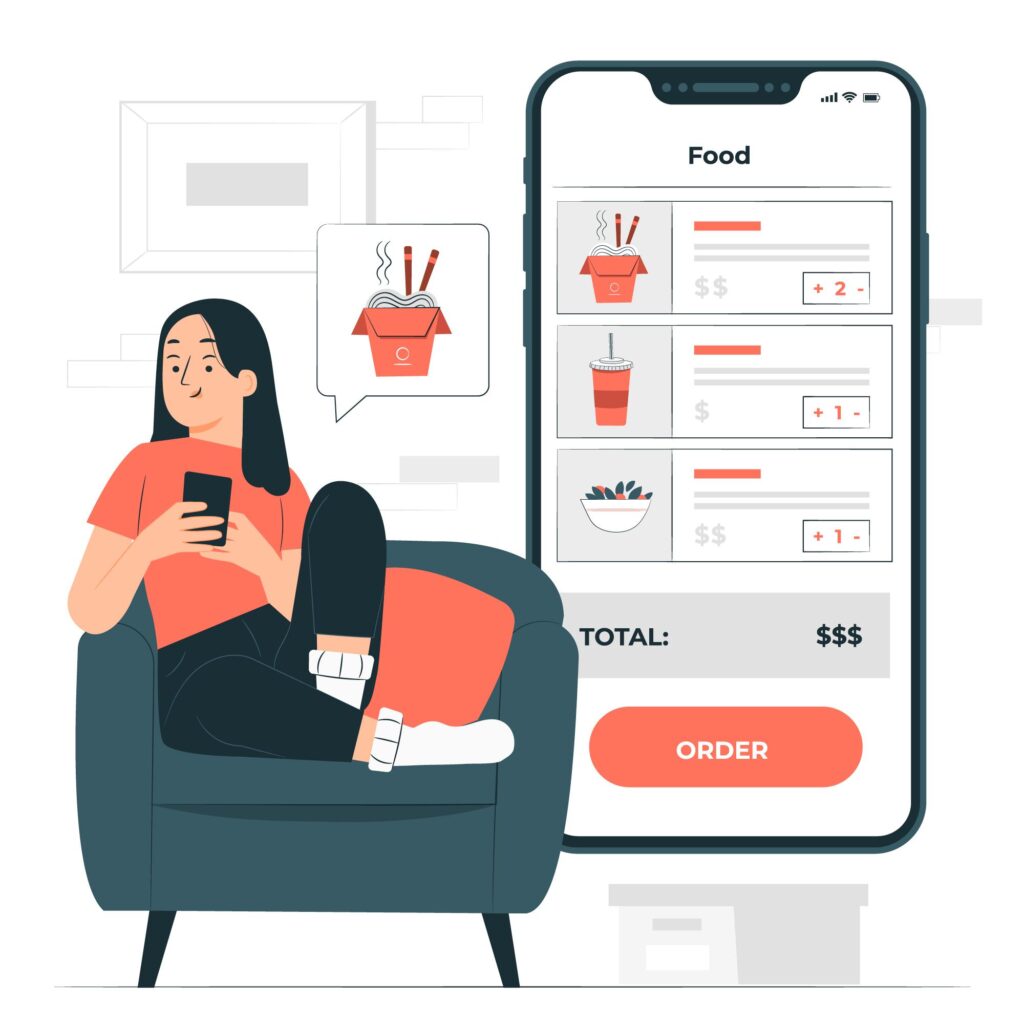
In conclusion, mobile apps have become an essential part of our lives, shaping the way we interact with the world, conduct business, and access information. As mobile technology continues to evolve, we can expect even more innovative and transformative applications to emerge, further blurring the lines between the physical and digital worlds.
Ready to harness the power of mobile app for your business? We offer comprehensive mobile app development services, from conceptualization and design to development and deployment. Our team of experienced professionals can help you create a custom mobile app that meets your specific needs and goals, driving engagement, boosting efficiency, and propelling your business forward in the mobile era.
Contact Webchirpy today and discover how mobile app can transform your business.
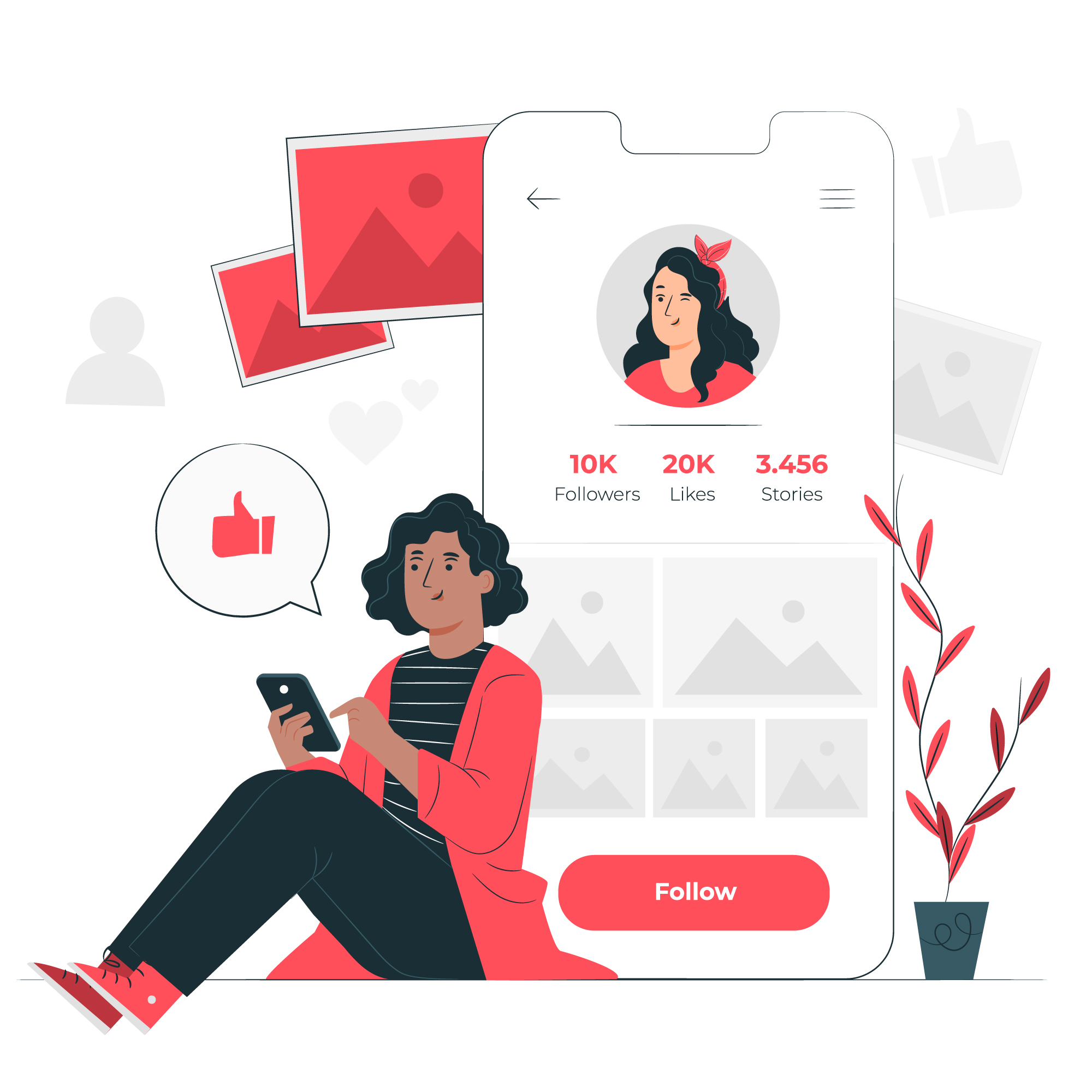
For decades, celebrity endorsements have been a cornerstone of marketing campaigns. Big-name actors, athletes, and musicians were seen as the…
For decades, celebrity endorsements have been a cornerstone of marketing campaigns. Big-name actors, athletes, and musicians were seen as the ultimate stamp of approval, influencing consumer decisions and boosting brand awareness. However, the marketing landscape is undergoing a significant shift. Today, social media influencers are rapidly replacing celebrities as the go-to marketing partners for brands.

Why the Shift?
The rise of social media has created a new type of marketing powerhouse: social media influencers. These individuals have cultivated large and engaged audiences on platforms like Instagram, YouTube, and TikTok. They possess a unique ability to connect with their followers on a personal level, fostering trust and authenticity that traditional celebrity endorsements often lack.
How Do Influencers Benefit Businesses?
Social media influencers offer a multitude of benefits for businesses looking to reach new audiences and achieve marketing goals. Here are some key ways influencers can positively impact your brand:
- Increased Brand Awareness: Collaborating with influencers exposes your brand to a wider audience, particularly within their established follower base. This can significantly boost brand recognition and recall.
- Enhanced Credibility and Trust: Consumers are increasingly skeptical of traditional advertising methods. Influencer endorsements, however, can feel more genuine and trustworthy, as influencers often share their honest opinions and experiences with products or services.
- Targeted Marketing: Influencers often cater to specific niches or demographics, allowing brands to target their ideal customer base with greater precision. This ensures your marketing message reaches the right people at the right time.
- Improved Brand Engagement: Influencers are experts at creating engaging content that resonates with their audience. Partnering with them can help you generate excitement and interest around your brand, leading to increased engagement and interaction.
- Content Creation: Influencers are skilled content creators who can develop unique and engaging content featuring your brand. This can be a valuable asset, saving you time and resources while generating high-quality content for your marketing campaigns.
What is the Role of Social Media Influencers in Business?
Social media influencers play a multifaceted role in the business world, acting as brand advocates, content creators, and marketing partners. They can:
- Promote products and services: Influencers can showcase your offerings through reviews, tutorials, and other creative content formats, effectively demonstrating the value proposition to their audience.
- Drive website traffic and sales: By generating excitement and interest, influencers can encourage their followers to visit your website or make purchases, directly impacting your bottom line.
- Build brand loyalty: Influencers who consistently deliver positive experiences with your brand can foster trust and loyalty among their audience, leading to repeat customers and brand advocates.
- Humanize your brand: Influencers can add a personal touch to your brand image, making it more relatable and approachable to consumers.
Benefits of Collaborating with Social Media Influencers
There are numerous advantages to partnering with social media influencers for your marketing efforts. Here are some of the most compelling benefits:
- Cost-effective: Compared to traditional celebrity endorsements, influencer marketing can be significantly more cost-effective, especially when targeting micro-influencers with engaged communities.
- Measurable results: Influencer marketing campaigns can be tracked and measured through various metrics, allowing you to assess the effectiveness of your collaboration and optimize future campaigns for better results.
- Authentic reach: Influencers often have genuine connections with their audience, leading to more authentic engagement and brand advocacy compared to traditional advertising methods.
- Increased brand advocacy: When influencers become vocal advocates for your brand, they can significantly amplify your message and reach a wider audience organically.

Conclusion: The Influencer Marketing Revolution
The rise of social media influencers is revolutionizing the marketing landscape. As consumers become increasingly wary of traditional advertising, brands are turning to influencers to build trust, connect with audiences, and achieve marketing objectives. By leveraging the power of influencer marketing, businesses can gain a significant competitive edge and establish themselves as leaders in their respective industries.
Partner with Webchirpy for Effective Influencer Marketing Campaigns
At Webchirpy, we understand the immense potential of influencer marketing and can help you develop and execute successful campaigns that deliver real results. Our team of experienced digital marketing professionals can help you identify the right influencers, negotiate partnerships, and create engaging content that resonates with your target audience.
Contact us today and let us help you unlock the power of influencer marketing to take your brand to the next level.

The meta-verse, a realm of interconnected virtual worlds, is set to revolutionize the way we interact with technology. This immersive…
The meta-verse, a realm of interconnected virtual worlds, is set to revolutionize the way we interact with technology. This immersive environment transcends the limitations of traditional 2D interfaces, presenting designers with a unique challenge and opportunity to craft entirely new user experiences (UX). In this blog post, we will delve into the transformative impact of the meta-verse on UX, exploring how it is reshaping design principles and charting the course for our future digital interactions.
Embracing the Third Dimension: Design for Spatial Experiences
Traditionally, UX design has focused on two-dimensional interfaces like websites and mobile apps. The meta-verse, however, introduces a three-dimensional canvas, demanding a paradigm shift in design thinking. Designers must now consider not just visual elements but also spatial relationships, navigation within virtual environments, and the integration of multi-sensory stimuli. This requires expertise in 3D modeling, animation, and the understanding of how users perceive and interact within physical spaces.

Beyond Screens: Redefining User Input and Interaction
The meta-verse breaks free from the constraints of traditional input methods like keyboards and touchscreens. New forms of interaction, such as gesture recognition, voice commands, and haptic feedback, are coming to the forefront. Designers need to carefully consider how these input methods can be seamlessly integrated into the user experience, ensuring intuitiveness and fostering a sense of natural engagement within the virtual world.
Building Social Connections: Fostering Community and Collaboration
The meta-verse is envisioned as a social hub, facilitating real-time interactions and fostering a sense of community. UX designers play a crucial role in creating virtual spaces that encourage meaningful connections and collaboration. This involves designing intuitive communication tools, virtual meeting spaces, and collaborative platforms that cater to diverse social needs and preferences within the metaverse.
Personalization and Adaptability: Tailoring the Metaverse Experience
A key aspect of UX in the metaverse is personalization. Designers can leverage user data and preferences to tailor virtual environments and experiences to individual needs. This might involve customizing avatars, curating content feeds, and dynamically adjusting the virtual world based on user behavior and preferences.
Shaping the Future: The Metaverse and Beyond
The impact of the meta-verse extends far beyond the realm of UX design. It has the potential to revolutionize various aspects of our lives, from work and education to entertainment and social interaction. As this virtual world continues to develop, designers will play a pivotal role in shaping its future, ensuring that it remains user-centric, ethical, and accessible for all.
Need help crafting UI UX?
Webchirpy's UI/UX design services can help you create intuitive and user-centric experiences. Our team of experienced designers will work closely with you to understand your unique needs and goals, developing user flows that streamline the user journey and deliver exceptional results.
Contact us today and let us help you craft user flows that captivate your audience and propel your business forward.
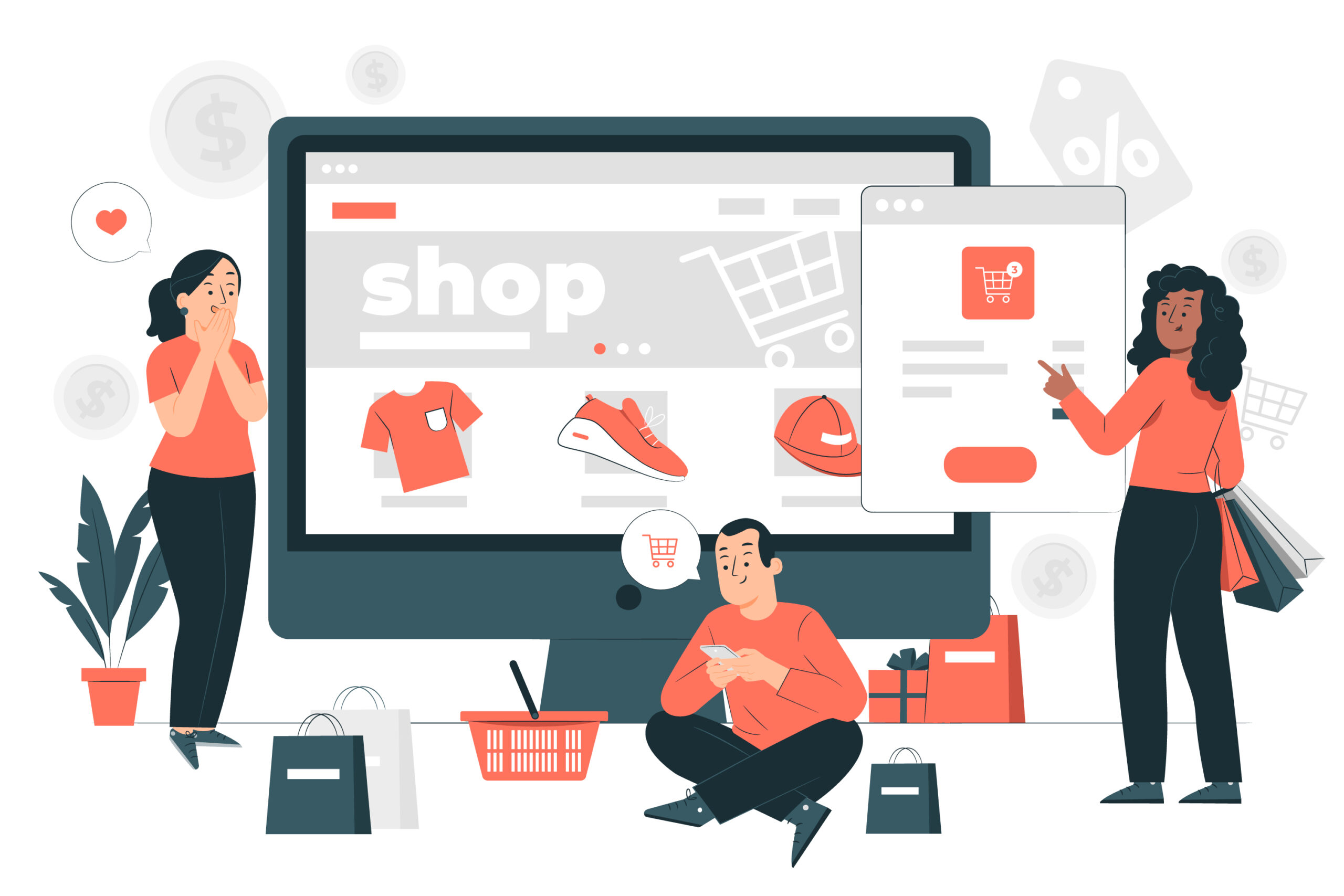
The e-commerce landscape is constantly evolving, driven by technological advancements and shifting consumer behavior. As we look towards the future,…
The e-commerce landscape is constantly evolving, driven by technological advancements and shifting consumer behavior. As we look towards the future, it's crucial to understand the emerging trends and how they will shape the way we shop online. This blog post delves into the exciting future of e-commerce websites, exploring the potential innovations, visionary perspectives, and the vast scope of opportunities for businesses.
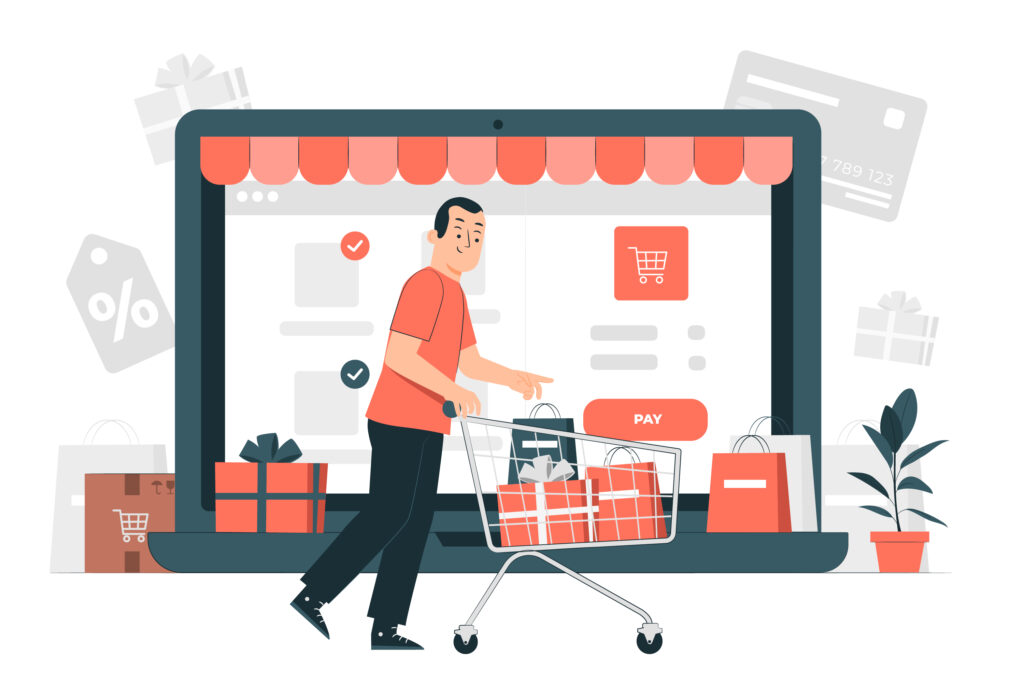
What Does the Future Hold for E-commerce?
Several key trends are set to redefine the e-commerce experience in the coming years. Let's explore some of the most prominent:
- Hyper-personalization: Imagine a shopping experience tailored specifically to your unique preferences and needs. This is the future of personalization, where AI and machine learning will analyze vast amounts of data to curate product recommendations, offers, and content that resonate deeply with each individual customer.
- Seamless omnichannel experience: The boundaries between online and offline shopping will continue to blur. Customers expect a seamless journey across all touchpoints, from browsing products on their mobile devices to completing purchases in physical stores or vice versa. E-commerce websites will need to integrate seamlessly with other channels to ensure a consistent and convenient experience.
- Voice commerce takes center stage: Voice assistants like Alexa and Google Assistant are becoming increasingly important in our daily lives. As voice technology matures, voice commerce is expected to experience exponential growth. E-commerce websites will need to be optimized for voice search and enable voice-activated features for a more intuitive and hands-free shopping experience.
- Augmented reality (AR) revolutionizes product visualization: AR has the potential to transform the way we interact with products online. Imagine virtually trying on clothes, placing furniture in your living room, or visualizing the scale of an appliance before making a purchase. AR integration will enhance customer engagement, boost confidence in online purchases, and ultimately lead to higher conversion rates.
- Focus on sustainability and ethical practices: Consumers are becoming increasingly conscious of the environmental and social impact of their purchases. E-commerce businesses that prioritize sustainability through eco-friendly packaging, ethical sourcing, and transparent practices will resonate with this growing segment of the market.
Where E-commerce is Headed?
The future of e-commerce is not just about implementing individual technologies; it's about creating a holistic and immersive shopping experience. We can envision a future where:
- Physical and digital worlds converge: stores will evolve into interactive showrooms, seamlessly blending the physical and digital aspects of shopping. Customers can use AR/VR technologies to interact with products, receive personalized recommendations, and even complete purchases on the spot.
- Social commerce takes center stage: Social media platforms will become even more integrated with the shopping experience. Consumers will be able to discover products, interact with influencers, and make purchases directly within their social media feeds.
- Evolving payment methods: We can expect to see the rise of new and innovative payment methods, such as cryptocurrency and biometric authentication, offering greater convenience and security to customers.
Future Scope of E-commerce and its Benefits for Businesses
The future of e-commerce presents a vast and exciting scope for businesses of all sizes. Here are some of the key benefits:
- Reaching a wider audience: E-commerce platforms remove geographical barriers, allowing businesses to tap into a global customer base.
- Enhanced customer engagement: Personalized experiences, interactive features, and omnichannel strategies will foster deeper customer engagement and loyalty.
- Increased sales and profitability: By leveraging data-driven insights and optimizing the customer journey, businesses can improve conversion rates and boost their bottom line.
- Greater operational efficiency: Automation, AI-powered logistics, and streamlined fulfillment processes can lead to significant cost savings and operational efficiency.

However, navigating the ever-evolving e-commerce landscape can be challenging. This is where partnering with a reliable and experienced e-commerce website development service like Webchirpy becomes crucial.
Webchirpy offers comprehensive solutions to help businesses build future-proof e-commerce websites. Our team of skilled developers and designers can create customized online stores that are not only visually appealing but also functionally robust and optimized for the latest trends and technologies. With our expertise, businesses can ensure they are well-positioned to capitalize on the vast opportunities that the future of e-commerce holds.
By embracing innovation, staying ahead of the curve, and partnering with the right resources, businesses can thrive in the dynamic world of e-commerce and create a compelling online presence that resonates with customers for years to come.
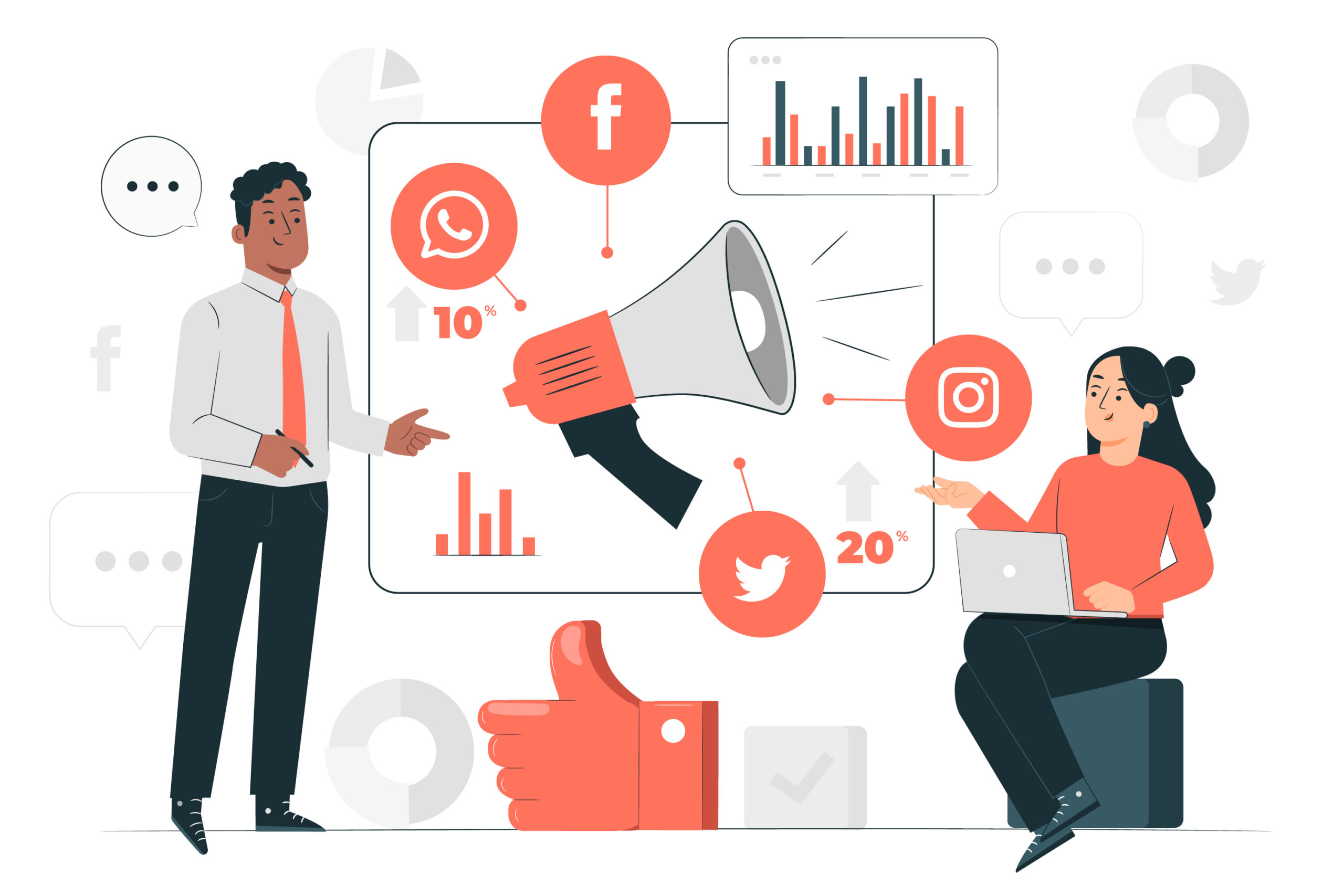
In today’s digitally driven world, social media has become an undeniable force, fundamentally altering how we connect, consume information, and…
In today's digitally driven world, social media has become an undeniable force, fundamentally altering how we connect, consume information, and interact with businesses. As a result many businesses are turning to social media marketing, hoping to tap into this vast and engaged audience. But is social media truly the "golden ticket" to marketing success?

The Allure of Social Media Marketing
Social media marketing offers several enticing advantages:
- Extensive Reach: Social media platforms boast billions of active users, providing businesses with the potential to reach a wider audience than ever before. This vast reach allows businesses to connect with potential customers across geographical boundaries and demographics.
- Enhanced Brand Awareness: A consistent and engaging social media presence helps businesses build brand recognition and establish themselves as thought leaders within their industry. By sharing valuable content and interacting with followers, businesses can foster brand loyalty and trust.
- Cost-Effectiveness: Compared to traditional marketing methods, social media marketing can be significantly more cost-effective. Many platforms offer free advertising options, and even paid advertising campaigns can be targeted precisely to reach the desired audience, maximizing return on investment.
- Real-Time Engagement: Social media fosters two-way communication, allowing businesses to directly engage with their audience in real-time. This immediacy enables businesses to address customer concerns, gather valuable feedback, and build stronger relationships.
- Increased Website Traffic: By sharing compelling content and incorporating website links, social media can drive significant traffic to a business's website. This increased traffic can translate into higher conversion rates and ultimately, boost sales.
While it offers numerous benefits, it also comes with its own set of challenges.
Navigating the Challenges of Social Media Marketing
- Competition: The social media landscape is crowded, with countless businesses vying for the attention of the same audience. Standing out from the noise and capturing user attention requires creativity, strategic planning, and consistent effort.
- Algorithm Shifts: Social media platforms frequently update their algorithms, which can significantly impact the reach and visibility of organic content. Businesses need to stay informed about these changes and adapt their strategies accordingly.
- Time Commitment: Building and maintaining a successful social media presence requires consistent effort and dedication. Creating engaging content, responding to comments and messages, and actively participating in online communities all demand significant time investment.
- Negative Feedback: Social media can be a breeding ground for negativity and criticism. Businesses need to be prepared to handle negative feedback professionally and constructively, using it as an opportunity to learn and improve.
- Measuring Success: Tracking and measuring the return on investment (ROI) of marketing efforts can be complex. Businesses need to define clear goals and utilize appropriate metrics to accurately assess the impact of their social media campaigns.
Despite these challenges, social media remains a powerful tool for businesses of all sizes. However, it's crucial to approach it strategically, understanding its limitations and complexities.
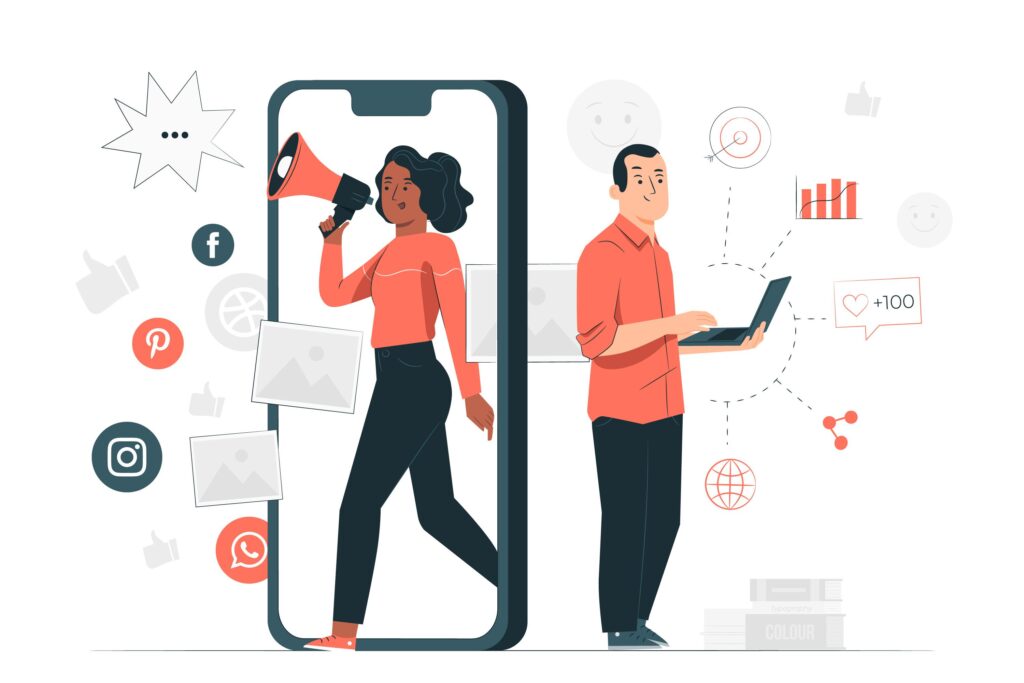
Is Social Media Marketing Right for Your Business?
Whether or not social media marketing is the "golden ticket" for your business ultimately depends on your specific goals, target audience, and industry. Carefully consider the following factors before diving in:
- Target Audience: Are your ideal customers active on social media platforms? Understanding their online behavior and preferred platforms is crucial for successful social media marketing.
- Industry Trends: Is social media marketing a common practice within your industry? If so, neglecting it might put you at a competitive disadvantage.
- Content Strategy: Do you have the resources and expertise to create engaging and consistent content that resonates with your target audience?
- Time Commitment: Are you prepared to dedicate the time and effort required to manage your social media presence effectively?
By carefully evaluating these factors, you can determine if social media marketing aligns with your overall marketing strategy and if it offers the potential to deliver a positive return on investment for your business.
How Webchirpy Can Help You Navigate the Social Media Landscape
Webchirpy can significantly enhance your efforts. Our team of experienced professionals can help you develop a comprehensive social media strategy, create compelling content, manage your online presence, and track your results, ensuring you maximize the return on your investment and achieve your marketing goals.

In the digital age, your brand is more than just a logo. It’s a living, breathing entity that tells a…
In the digital age, your brand is more than just a logo. It's a living, breathing entity that tells a story, evokes emotions and connects with your audience on a deeper level. And the tools you use to craft that story? Digital assets.
But what exactly is digital asset creation, and why is it so crucial for businesses in today's online landscape? Let's see the world of digital assets and explore how mastering their creation can elevate your brand to new heights.

What is Digital Asset Creation?
At its core, digital asset creation is crafting visual and multimedia content that embodies your brand identity. It encompasses everything from your website design and social media graphics to infographics, videos, and even downloadable ebooks. Think of it as a treasure trove of visually compelling and informative pieces that tell the world who you are and what you stand for.
Why are Digital Assets Important for Modern Businesses?
In today's fast-paced digital world, attention is a precious commodity. People get information from all sides, and standing out requires more than just a catchy slogan. Digital assets offer a powerful way to cut through the noise and connect with your audience in a meaningful way.
Here's why they're so vital:
- Visual appeal: Humans are naturally drawn to visuals. Well-designed and visually stunning digital assets capture attention and make your message more impactful.
- Storytelling power: Digital assets allow you to weave a narrative around your brand, evoking emotions and creating a deeper connection with your audience.
- Versatility and reach: From social media platforms to your website and email campaigns, digital assets can be adapted and used across a multitude of channels, maximizing your reach and engagement.
- Measurable results: With analytics tools, you can track the performance of your digital assets and understand how they're impacting your marketing goals.
Crafting Your Digital Masterpiece: Tips for Mastering Digital Asset Creation
Now that you understand the power of digital assets, it's time to unleash your inner creative genius and start crafting your own masterpieces. Here are some tips to get you started:
- Know your audience: Understanding your target demographics and their preferences is key to creating digital assets that resonate with them.
- Embrace storytelling: Infuse your assets with a compelling narrative that connects with your audience on an emotional level.
- Invest in quality: Don't settle for mediocrity. Use high-quality visuals, engaging copy, and professional design to create assets that truly stand out.
- Maintain brand consistency: Ensure all your digital assets adhere to your brand guidelines, and create a unified and cohesive experience.
- Stay ahead of the curve: Keep up with the latest trends and technologies in asset creation to stay relevant and engaging.

Webchirpy: Your Partner in Digital Branding Excellence
Mastering the art of digital asset creation can seem daunting, but you don't have to go it alone. Webchirpy, a leading branding agency, can be your trusted partner in crafting impactful and high-quality digital asset that elevate your brand to new heights.
Our team of experienced designers, copywriters, and digital marketing experts will work closely with you to understand your brand vision and create a comprehensive digital asset strategy that aligns with your goals.
From logo design and website development to social media graphics and video production, we offer a complete service to help you tell your brand story and connect with your audience in a meaningful way.
So, why wait? Unleash the power of digital assets and embark on a journey of brand storytelling that captivates your audience and drives your business forward.

While your product or service might be exceptional, standing out from the competition requires a different approach. Events, whether conferences,…
While your product or service might be exceptional, standing out from the competition requires a different approach. Events, whether conferences, product launches, or industry mixers, present a golden opportunity to not only connect with your audience but also to leave a lasting impression that elevates your company image. But how do you ensure your event is more than just another date on the calendar? Enter the power of strategic event branding.

Why Event Branding Matters?
Think of your event as an extension of your brand. It's a living, breathing embodiment of your values, mission, and personality. Effective event branding ensures that every element, from the décor to the speakers, seamlessly aligns with your brand identity. This consistency fosters trust and recognition, leaving a clear and memorable mark on attendees' minds.
Imagine it: guests walk into a venue transformed into a world showcasing your brand's essence. The color scheme, logo placement, and even the choice of refreshments subtly weave your narrative. Interactive experiences tailored to your brand message further engage participants, creating a multi-sensory journey that resonates deeply. This emotional connection transcends the event itself. When attendees recall the experience, they associate it with the positive feelings cultivated by your brand. This translates to increased brand loyalty and, ultimately, a stronger connection with your target audience.
Understanding Event Design
At its core, event design is the art of crafting an immersive and impactful experience. It encompasses everything from the physical space to the flow of activities, creating a narrative that reinforces your brand message. Think of it as the stage upon which your brand story unfolds.
Key elements of successful event design include:
- Thematic environment: Transform the venue into a living embodiment of your brand, using colors, textures, and props to tell your story.
- Engaging activities: Move beyond passive presentations and lectures. Interactive workshops, games, and demonstrations keep attendees engaged and create lasting memories.
- Strategic technology: Utilize tech-driven elements like augmented reality or interactive displays to enhance the experience and showcase your brand's innovative spirit.
- Sensory storytelling: Appeal to all senses through music, lighting, aroma, and even taste, crafting a complete and impactful brand experience.
By meticulously crafting these elements, you create an event that's not just memorable but also profoundly connected to your brand.
Crafting Your Event Design and Branding
The journey to a successful event branding strategy begins with clarity. Define your target audience, understand their expectations, and clearly articulate the message you want to convey. With this foundation laid, you can embark on the exciting process of bringing your brand vision to life:
- Develop a cohesive brand narrative: Craft a story that encompasses your brand values, mission, and the event's specific theme. This narrative will guide every design decision.
- Collaborate with experienced professionals: Event design and branding professionals possess the expertise to translate your vision into reality, ensuring a seamless and impactful experience.
- Embrace creativity and innovation: Don't be afraid to think outside the box. Unique and engaging elements will set your event apart and foster stronger brand recall.
- Measure and refine: Track attendee engagement, social media mentions, and brand sentiment to analyze the effectiveness of your branding efforts and continuously improve future events.

Webchirpy: Your Branding Partner in Success
Creating a truly impactful event branding strategy requires understanding your audience, your brand, and the art of storytelling. While this might seem daunting, you don't have to navigate this journey alone. Webchirpy, a leading provider of branding services, We can be your trusted partner in creating unforgettable experiences that elevate your company image.
Our team of experts will collaborate with you to understand your vision, translate it into a captivating event design, and execute it flawlessly. From conceptualizing themes and designs, Webchirpy takes care of everything, allowing you to focus on what matters most – connecting with your audience and leaving a lasting mark.
Ready to unlock the power of event branding? Contact us today and let us help you design an event that resonates with your audience and leaves a lasting impression.

Email marketing remains a potent tool for nurturing leads, engaging customers, and ultimately driving sales. But with overflowing inboxes and…
Email marketing remains a potent tool for nurturing leads, engaging customers, and ultimately driving sales. But with overflowing inboxes and ever-evolving algorithms, crafting an effective email strategy can feel like navigating a maze. Fear not, fellow marketers! This comprehensive guide unpacks strategies to boost engagement and propel your sales toward new heights.
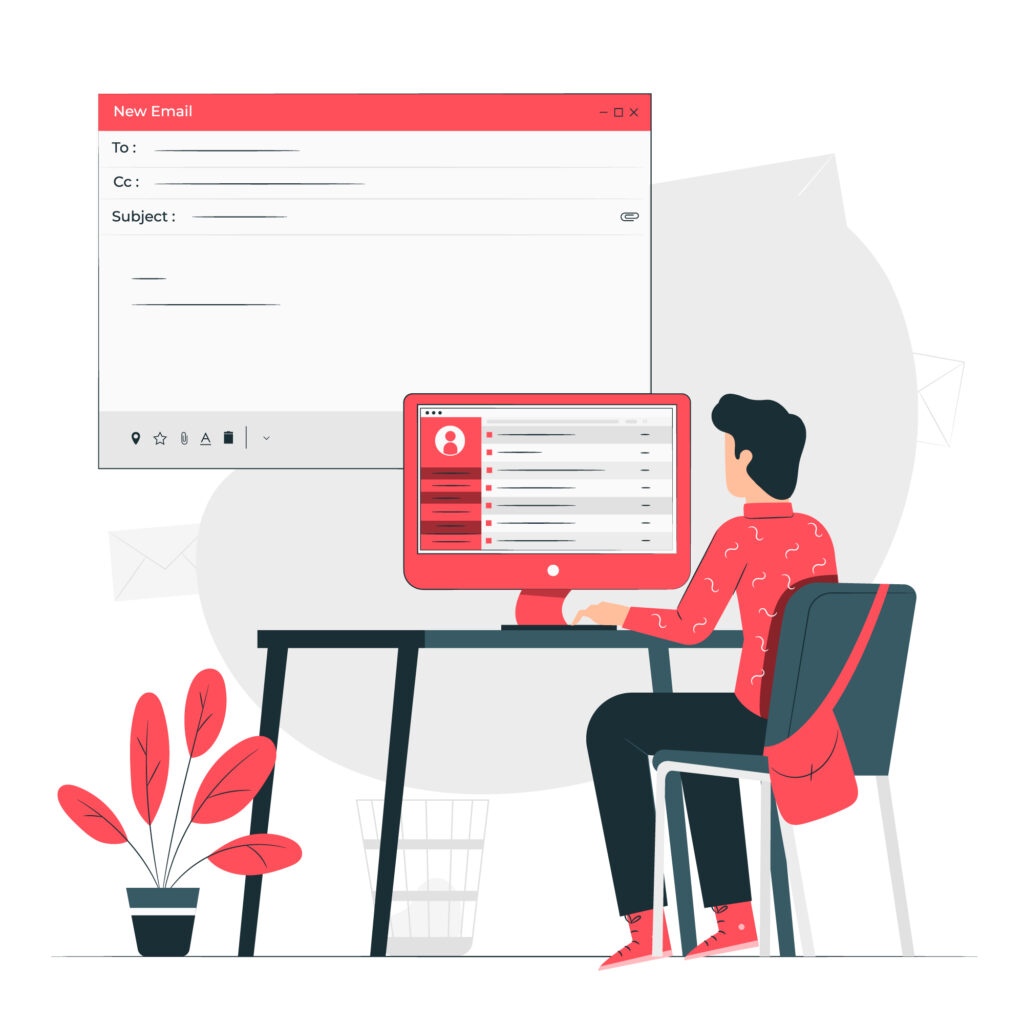
What is an Email Marketing Strategy?
Before delving into specific strategies, let's establish a solid foundation. An email marketing strategy is a meticulously crafted roadmap, outlining your goals, target audience, messaging, and the channels you'll leverage to reach them. It's the compass guiding your email campaigns, ensuring each message resonates deeply with your recipients, driving them down the path toward conversion.
Is there a "Best" Email Marketing Strategy?
The short answer is: no. The most effective approach hinges on understanding your unique audience and business objectives. What works for an e-commerce store might not translate to a B2B SaaS company. However, some universal principles hold:
- Personalization is key: Speak directly to your audience, using their names and tailoring content to their interests.
- Segmentation is your friend: Group subscribers based on demographics, behavior, or interests for targeted messaging.
- Value first, sell later: Provide valuable content, insights, or entertainment before pitching your products or services.
- Mobile-first is essential: Optimize your emails for flawless viewing on smartphones and tablets.
1. Master the Art of Storytelling:
Humans are wired for stories. Use captivating narratives to weave your brand message into your emails. Share customer testimonials, showcase product journeys, or highlight the "why" behind your business. This emotional connection fosters brand loyalty and sets you apart from the promotional noise.
2. Leverage the Power of Automation:
Let technology be your ally. Email automation tools can handle repetitive tasks like welcome sequences, abandoned cart reminders, and birthday greetings. This frees you to focus on crafting high-impact campaigns while nurturing leads on autopilot.
3. Craft Compelling Subject Lines:
Your subject line is the first impression, the gateway to your email's content. Make it count! Use strong verbs, intrigue without being clickbait-y, and personalize it whenever possible. A well-crafted subject line can skyrocket your open rates, setting the stage for engagement.
4. Optimize for Conversions:
Every email should have a clear call to action (CTA), whether it's visiting a landing page, downloading a white paper, or making a purchase. Use strong CTAs, and strategically placed buttons, and test different variations to see what drives the most conversions.
5. Embrace the Power of A/B Testing:
Don't guess, experiment! A/B testing allows you to compare different versions of your emails, from subject lines to layouts and CTAs. This data-driven approach helps you refine your messaging and optimize for maximum impact.

Webchirpy: Your Email Marketing Partner
Implementing these strategies requires time, effort, and the right tools. That's where Webchirpy comes in. Our comprehensive email marketing service provides everything you need to launch, automate, and track your email campaigns. From user-friendly templates and drag-and-drop builders to advanced analytics and segmentation tools, we empower you to craft winning email campaigns that drive results.
Ready to Unleash the Power of Email Marketing?
By understanding your audience, implementing these strategies, and partnering with a reliable service like ours, you can transform your email marketing into a powerful engine for engagement and sales. So, take the first step today, craft your email masterpiece, and watch your audience respond with enthusiasm and action.
Remember, email marketing is an ongoing journey, not a one-time sprint. Continuously test, refine, and adapt your strategies to stay ahead of the curve and keep your audience engaged. With dedication and the right tools, your email inbox can become a fertile ground for nurturing leads, building relationships, and ultimately, achieving your business goals.

The mobile app market is growing. With over 5 million apps available in major app stores, it’s no surprise that…
The mobile app market is growing. With over 5 million apps available in major app stores, it's no surprise that businesses are eager to get in on the action. However, developing a successful mobile app isn't as simple as throwing together some code and hoping for the best. There are several mobile app development mistakes that can derail even the most promising ideas.
In this blog post, we'll explore five of the most frequent missteps made in mobile app development, along with practical tips to help you avoid them. By learning from these mistakes, you can increase your chances of creating an app that users love and that delivers real value to your business.

1. Ignoring the User
The biggest mistake any app developer can make is forgetting who they're building for. Before you even write a line of code, it's crucial to understand your target audience. What are their needs and pain points? Their expectations for a mobile app? What devices will they be using? Once you have a clear picture of your user, you can design and develop an app that caters to their specific needs and preferences.
2. Overlooking the Design
A well-designed app is not only visually appealing, but it's also intuitive and easy to use. Poor user interface (UI) and user experience (UX) design can quickly frustrate users and lead to uninstalls. Invest in creating a user-friendly interface that follows best practices for mobile app design. This includes using clear and consistent navigation, employing intuitive gestures, and ensuring the app is optimized for different screen sizes and resolutions.
3. Neglecting Testing and Quality Assurance
Bugs and glitches can make even the most promising app unusable. Thorough testing and quality assurance (QA) are essential to ensure your app is free of errors and performs as expected. This includes testing on different devices, operating systems, and network conditions. Don't wait until launch to identify and fix bugs – address them early and often during the development process.
4. Failing to Plan for Updates and Maintenance
Your app shouldn't be a one-time project. Mobile apps need to be regularly updated to fix bugs, add new features, and improve performance. Make sure you have a plan for ongoing maintenance and updates, and ensure your app is built in a way that allows for easy updates and modifications.
5. Underestimating the Cost and Time
Developing a successful mobile app can be a time-consuming and expensive endeavor. Don't underestimate the resources and budget required. Be realistic about your development timeline and budget, and factor in the cost of ongoing maintenance and updates.

Avoiding these common mobile app development mistakes can significantly increase your chances of developing a successful mobile app. But even with careful planning, there's always a chance you might encounter challenges along the way.
That's where Webchirpy comes in.
Webchirpy is a development service provider with a proven track record of success. Our team of experienced developers and designers can help you navigate the complexities of mobile app development and bring your vision to life. We offer a wide range of services, from conceptualization and design to development and launch, and we're committed to delivering high-quality, user-friendly apps that meet your business objectives.
Contact us today and learn how we can help you create a mobile app that users love.

In the crowded marketplace, where products jostle for attention, packaging often becomes the silent hero, whispering promises of quality and…
In the crowded marketplace, where products jostle for attention, packaging often becomes the silent hero, whispering promises of quality and experience. But beyond mere aesthetics, print and packaging design wield a potent influence, capable of igniting sales and fostering enduring brand love. So, how exactly does this seemingly mundane element work its magic? Let's delve into the world of print & packing design, unveiling its secrets to success.

1. The Allure of the First Impression:
Imagine scrolling through an endless aisle of similar products. Suddenly, one leaps out - its packaging adorned with vibrant colors, captivating typography, and a playful tagline. In that instant, you've been snagged. Packaging acts as a visual siren song, drawing you in and sparking curiosity. This initial attraction, meticulously crafted by skilled designers, is the first step on the path to purchase.
2. From Shelf to Storyteller:
Your packaging isn't just a container; it's a canvas for your brand narrative. Each element, from the color palette to the chosen materials, speaks volumes about your values, personality, and what makes you unique. A well-designed package tells a story, one that resonates with your target audience and builds emotional connections. Think of it as a silent handshake, establishing trust and rapport before the first sip, bite, or click.
3. The Influence of "Label Love":
Information is power, but clarity is king. Effective package labeling ensures customers understand your product, its benefits, and how it fits seamlessly into their lives. Clear, concise labeling builds trust, fosters informed decisions, and reduces cognitive dissonance. Remember, a confused customer is a lost customer, and your packaging can be the bridge that guides them toward a confident purchase.
4. Customizing the Customer Journey:
In a world yearning for personalization, generic packaging simply doesn't cut it. Custom packaging, tailored to your brand and audience, elevates the unboxing experience from mundane to magical. Imagine a box adorned with a customer's name, a handwritten note, or a special offer. Suddenly, it's not just a product; it's a personal gift, a token of appreciation, a memory in the making. This bespoke touch strengthens brand loyalty and turns one-time buyers into loyal customers.
5. From Shelf Life to Shelfie Fame:
In the age of social media, packaging transcends the physical realm. Eye-catching designs become Instagram-worthy moments, shared, liked, and commented on, spreading brand awareness. When your packaging becomes a conversation starter, a backdrop for selfies and stories, you've tapped into the power of influencer marketing. It's free advertising, fueled by the genuine enthusiasm of your customers.

Webchirpy: Orchestrating an Unforgettable Unboxing Symphony
Crafting impactful print and packing design is no small feat. It requires a blend of creativity, strategic thinking, and technical expertise. That's where Webchirpy steps in. Our team of designers takes your vision and transforms it into tangible magic, breathing life into your brand story through captivating packaging that speaks volumes without uttering a word.
From initial concept development to meticulous execution, we ensure your packaging resonates with your target audience, fuels sales, and fosters brand love.
Contact us today and discover how we can transform your product into a sales-boosting, brand-loving masterpiece!

In today’s tech-driven landscape, mobile apps reign supreme. They’re the pocket-sized gateways to commerce, entertainment, and connection, holding the potential…
In today's tech-driven landscape, mobile apps reign supreme. They're the pocket-sized gateways to commerce, entertainment, and connection, holding the potential to revolutionize industries and captivate audiences. But the journey from app idea to app icon isn't a solitary one. Choosing the right mobile app development partner can be the difference between a digital masterpiece and a pixelated flop. So, how do you navigate the maze of developers and find the right mobile app development partner?
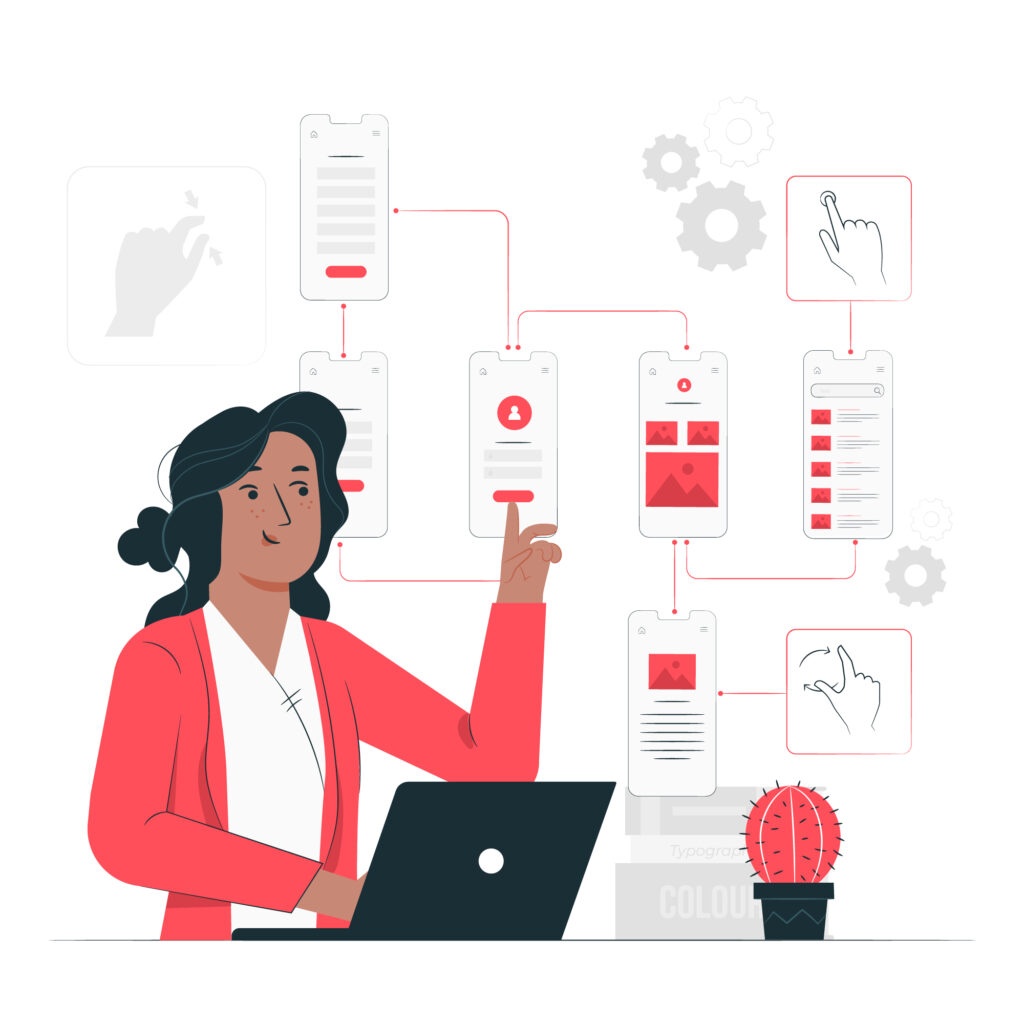
Defining Your Vision
Before embarking on your developer odyssey, crystallize your app's purpose and target audience. Ask yourself: what problem does it solve? Who are you trying to reach? What features are essential for user engagement? Answering these questions lays the foundation for a focused search.
Expertise that Matches Your Needs
Not all developers are created equal. Some specialize in specific platforms (iOS, Android), while others excel in niche functionalities (AR/VR, gaming). Identify your app's technical requirements and seek partners with proven expertise in those areas. Don't shy away from asking for project portfolios and detailed case studies to gauge their capabilities.
Portfolio & References
A company's portfolio is your window into its creative soul. Past projects for alignment with your vision. Do their apps exude the polish and functionality you seek? Ask for client references and engage in open communication to understand their track record of meeting deadlines, exceeding expectations, and fostering collaborative relationships.
Communication is Key
Your app development journey is a marathon, not a sprint. Choose a partner who shares your vision, listens actively, and communicates effectively. Regular progress updates, open channels for feedback, and a transparent development process are vital for building trust and ensuring mutual understanding.
The Price of Innovation
Cost is an undeniable factor, but the cheapest option isn't always the wisest choice. Be wary of suspiciously low quotes, as they might compromise quality or lead to hidden fees. Instead, seek partners who offer clear cost breakdowns, fixed-price models, or flexible payment options that suit your budget.
Timeline & Milestones
Deadlines are your compass, guiding your app towards a successful launch. Seek developers who propose realistic timelines, establish clear milestones, and commit to transparent progress reporting. This ensures clear expectations and minimizes the risk of missed deadlines and costly delays.
Beyond the Launch
Your app's journey doesn't end with its launch. Choose a partner committed to ongoing maintenance, bug fixes, and security updates. Look for companies that offer robust post-launch support plans and proactive measures to ensure your app's long-term stability and performance.

Webchirpy: Transforming Ideas into Pixel-Perfect Reality
If navigating this developer landscape still feels overwhelming, look no further than Webchirpy. Our team of passionate app developers, equipped with cutting-edge expertise and unwavering client focus, can seamlessly translate your vision into a thriving mobile app. From meticulous planning and intuitive design to robust development and ongoing support, We empower your app to soar. Our proven track record of delivering mobile experiences speaks volumes about our commitment to quality, innovation, and client satisfaction.
Let us be your compass on the path to mobile app success. Contact us today to embark on a collaborative journey to build the mobile app of your dreams.

Mobile-first UX design isn’t just a trend, it’s a shift that prioritizes the small screen above all. But what does…
Mobile-first UX design isn't just a trend, it's a shift that prioritizes the small screen above all. But what does this mean for designers navigating the ever-evolving landscape of UI/UX trends in 2024? Buckle up, as we explore the latest UI/UX design trends, equipped with practical tips to implement them and leave your mobile users enthralled.

Understanding the Mobile-First Mindset
Before we explore the trends, let's understand the mobile-first UX design. It's about crafting experiences that prioritize the needs and context of mobile users. Think thumb-friendly interfaces, efficient navigation, and content tailored for bite-sized consumption. It's understanding that our users are likely on the go, juggling tasks, and craving information quickly—and designing accordingly.
1. Microinteractions Matter
Small, delightful animations and subtle feedback gestures, are the unsung heroes of mobile engagement. They inject personality, reinforce successful actions, and guide users intuitively through your interface. Imagine a shopping cart icon bouncing gently when an item is added, or a progress bar morphing into a celebratory confetti animation upon order completion. These micro-interactions weave magic into the mundane, turning tasks into delightful micro-experiences.
2. Voice UI Ascends
The rise of smart assistants and voice-activated devices has ushered in a new era of hands-free interaction. Users expect the convenience of commanding their screens with their voices. Embrace voice search optimization, prioritize natural language understanding, and design interfaces that cater to intuitive voice commands. Remember, the key is to anticipate user intent and provide seamless voice-driven solutions.
3. Content Reigns Supreme
Attention spans are dwindling, and mobile users crave information in digestible chunks. Prioritize concise, scannable content, utilizing bullet points, clear headings, and captivating visuals. Leverage microcontent strategies like short-form videos or interactive infographics to engage users without overwhelming them. Remember, less is often more in the mobile world.
4. Personalization Takes Center Stage
A one-size-fits-all approach is a recipe for mobile app oblivion. Users crave personalized experiences that cater to their specific needs and preferences. Leverage data and machine learning to tailor content, recommendations, and even UI elements to individual users. Imagine a news app curating news feeds based on user interests, or a shopping app suggesting products based on past purchases. This level of personalization fosters loyalty and keeps users coming back for more.
5. Accessibility for All
Inclusivity is not just a buzzword; it's a fundamental human right. Ensure your mobile UI/UX is accessible to users with disabilities by incorporating features like high-contrast interfaces, voice control options, and alternative text descriptions for images. Not only is this ethically imperative, but it also broadens your user base and fosters a more inclusive digital environment.

Putting Theory into Practice
Now, let's translate these trends into actionable steps:
- Conduct user research: Understand your target audience's mobile habits, pain points, and expectations.
- Prioritize content hierarchy: Organize information to prioritize essential elements above the fold.
- Embrace white space: Don't overcrowd the screen; give users breathing room to focus.
- Optimize for speed: Ensure fast loading times and seamless navigation.
- Test and iterate: Continuously refine your design based on user feedback and performance data.
Webchirpy: Your Mobile UI/UX Design Ally
Creating a captivating mobile experience in this dynamic landscape can be daunting. That's where Webchirpy shines. Our passionate team of UI/UX experts understands the nuances of mobile design and possesses the expertise to craft seamless, engaging experiences that convert. From brainstorming innovative concepts to meticulously polishing every pixel, we partner with you to turn your mobile vision into reality.
Embrace the mobile-first world and captivate your audience with the latest UI/UX design trends. Let Webchirpy be your guide as you navigate this exciting frontier, where every tap, swipe, and interaction becomes a testament to your brand's brilliance.
Ready to take your mobile interface to the next level? Contact us today and unlock the full potential of your digital touchpoint.

In today’s digital landscape, a strong online presence is no longer a luxury—it’s a necessity. Whether you’re a fledgling startup…
In today's digital landscape, a strong online presence is no longer a luxury—it's a necessity. Whether you're a fledgling startup or a seasoned enterprise, navigating the ever-evolving world of digital marketing can feel overwhelming. But fear not! This comprehensive guide will equip you with the knowledge and insights to understand and leverage the essential digital marketing services that can propel your business forward.

1. Website Design & Development
Your website is your virtual storefront, your digital ambassador. Invest in a user-friendly, responsive website that reflects your brand identity and facilitates seamless navigation. Remember, first impressions matter online, so make sure your website is a welcoming and informative space for potential customers.
2. Search Engine Optimization (SEO)
SEO is the art and science of optimizing your website and content to rank higher in search engine results pages (SERPs). Think of it as building a map that helps search engines like Google understand what your website is about and who it's for. Effective SEO strategies can significantly increase organic traffic, boost brand awareness, and ultimately, drive conversions.
3. Content Marketing
Content is king in the digital realm. Create valuable, engaging content that resonates with your target audience and addresses their pain points. From informative blog posts and captivating videos to interactive infographics and insightful ebooks, the possibilities are endless. Consistent content creation fuels social media engagement, attracts organic traffic, and establishes your brand as a thought leader.
4. Social Media Marketing (SMM)
In today's hyper-connected world, social media platforms offer a powerful avenue to connect with your audience, build brand loyalty, and drive engagement. Leverage platforms like Facebook, Instagram, and Twitter to share valuable content, participate in conversations, and run targeted advertising campaigns. Remember, authenticity and consistent interaction are key to building a thriving online community.
5. Email Marketing
Don't underestimate the power of email! Email marketing remains a highly effective way to nurture leads, promote deals, and build lasting relationships with your customers. Craft targeted email campaigns based on user behavior and preferences, personalize your messages, and provide valuable content that keeps your audience engaged.
6. Pay-Per-Click (PPC) Advertising
Paid advertising platforms like Google Ads and Facebook Ads can be incredibly effective for reaching a wider audience and driving targeted traffic to your website. By carefully selecting keywords and crafting compelling ad copy, you can attract highly qualified leads and generate immediate results. However, remember to set realistic budgets and track your return on investment (ROI) to ensure optimal campaign performance.
7. Analytics & Insights
Data is your digital compass. Leverage powerful analytics tools like Google Analytics to track website traffic, user behavior, and campaign performance. By analyzing this data, you can gain valuable insights into what's working and what's not, allowing you to continuously optimize your digital marketing strategies for maximum impact.
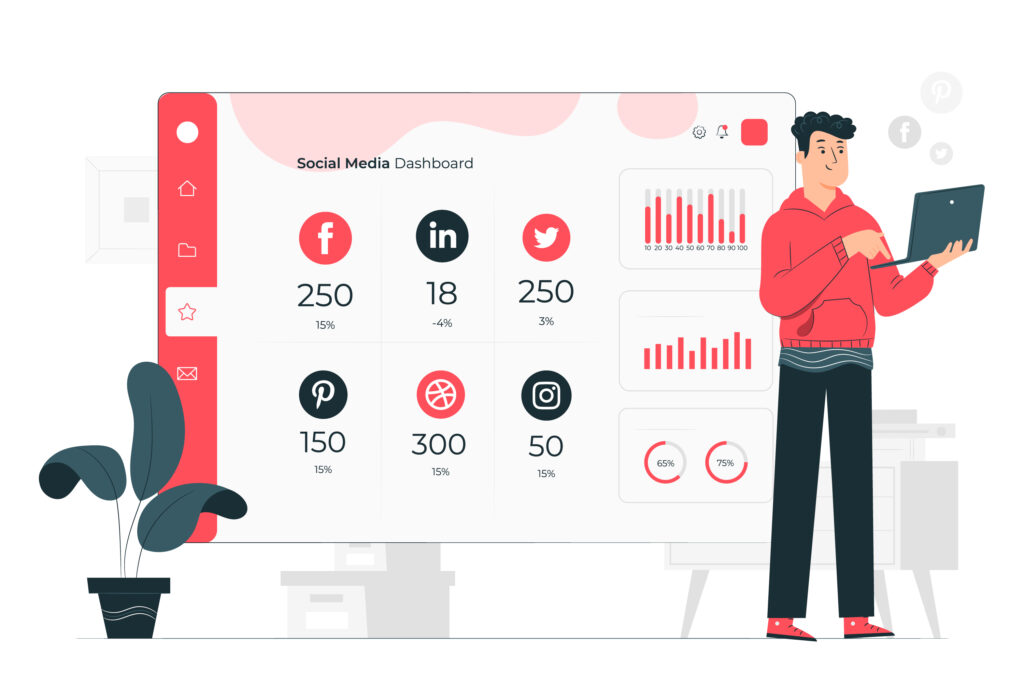
Remember, digital marketing is not a one-time endeavor; it's a continuous journey of experimentation, adaptation, and optimization. Regularly analyze your results, identify areas for improvement, and test new strategies to stay ahead of the curve.
Webchirpy: Your Partner in Digital Success
As you navigate the complex digital landscape, remember that you don't have to go it alone. Webchirpy offers essential digital marketing services to help businesses of all sizes achieve their online goals. From website design and development to SEO optimization and social media marketing, Our team of experts can tailor a customized strategy to meet your specific needs and budget.
Whether you're taking your first steps online or looking to optimize your existing digital presence, We can be your trusted partner on the path to online success. Contact us today for a free consultation and let us help you unlock the full potential of your digital marketing efforts.

In today’s lightning-fast online world, website performance reigns supreme. A lagging, clunky website isn’t just an annoyance it’s a one-way…
In today's lightning-fast online world, website performance reigns supreme. A lagging, clunky website isn't just an annoyance it's a one-way ticket to losing viewers and conversions. So, how do you craft a high-performance website that zips across screens, keeps users engaged, and helps your business thrive? Don your coding goggles, as we dive into practical tips for building high-performance websites that leave the competition in the dust.

1. Master the Metrics: Demystifying Website Performance
Before zooming into optimization, let's define our target. What exactly makes a high-performance website? It's a cocktail of several factors, each crucial for a smooth user experience:
- Page Load Speed: The time it takes for a page to fully render. Aim for under 3 seconds – anything longer leads to user frustration and potential abandonment.
- Accessibility: Ensuring everyone, regardless of ability, can easily navigate and interact with your website.
- Responsiveness: Flawlessly adapting to different screen sizes and devices, from desktops to smartphones.
- Conversion Rate: The percentage of visitors who take a desired action, like signing up for a newsletter or making a purchase.
2. Optimize Like a Pro: Tools and Techniques for Peak Performance
Now, let's arm ourselves with the tools and tactics to build websites that tick all the performance boxes:
- Image Optimization: Compress images without sacrificing quality. Tools like TinyPNG and JPEGmini are your allies here.
- Leverage Caching: Store frequently accessed data locally so it doesn't need to be downloaded every time, resulting in faster loading times.
- Minimize HTTP Requests: Every image, script, and element on your page requires an HTTP request to load. Prioritize essential elements and combine others when possible.
- Choose a Blazing-Fast Hosting Provider: Invest in a reliable hosting provider with robust infrastructure and excellent server response times.
3. Craft a User-Centric Journey: Design for Speed and Engagement
Remember, website performance isn't just about raw speed; it's about creating a seamless, enjoyable experience for visitors. Here's how:
- Intuitive Navigation: Make it clear and easy for users to find what they need. A well-organized menu, logical page hierarchy, and consistent design contribute greatly.
- Meaningful Content: Ditch the fluff and focus on content that informs, engages, and adds value. Compelling visuals and concise copy keep users glued to your pages.
- Mobile-First Mindset: Over half of the web traffic comes from mobile devices. Prioritize mobile responsiveness and optimize your website for smaller screens.
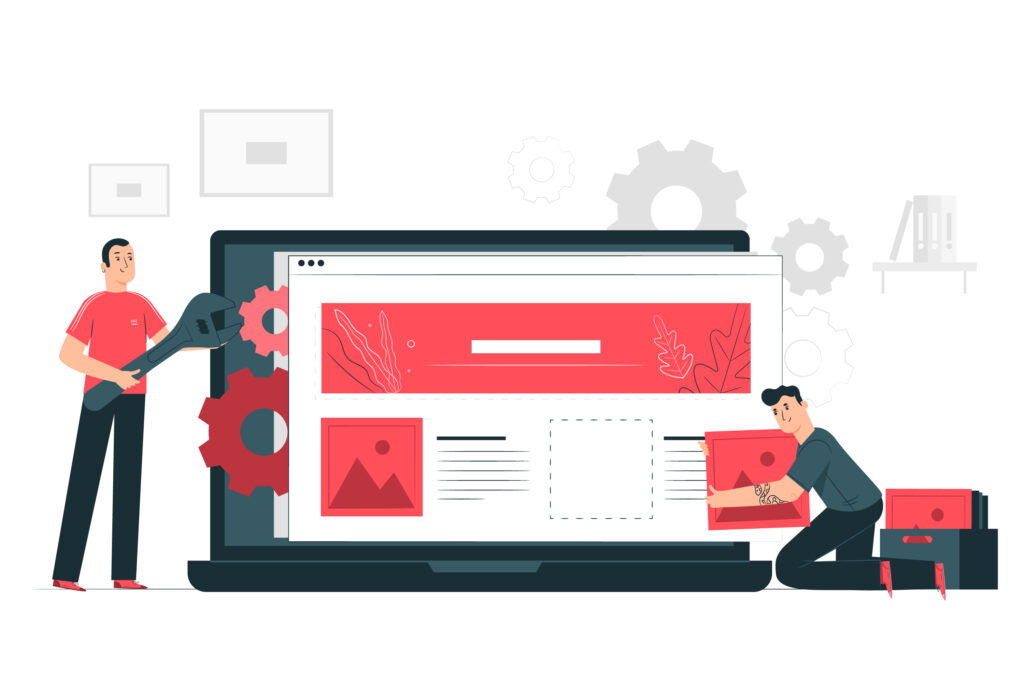
4. Measure, Analyze, Optimize: The Performance Feedback Loop
Building a high-performance website is an ongoing process. Tools like Google PageSpeed Insights and GTmetrix provide valuable insights into your website's performance metrics. Analyze these reports regularly, identify areas for improvement, and implement changes to continuously optimize your website.
5. Seek Expert Help: When DIY Isn't Enough
Webchirpy's website development service specializes in crafting high-performing websites that are not only fast and responsive but also visually stunning, user-friendly, and conversion-driven. Our team of experienced developers and designers will work closely with you to understand your unique needs and objectives, crafting a website that is a perfect fit for your brand and audience.
Remember, a high-performance website is an investment that pays off in user engagement, conversions, and ultimately, business success. So, don't settle for mediocre – implement these tips, leverage expert help if needed, and watch your website transform.

In today’s fast-paced, hyper-competitive world, every detail counts. When it comes to building a successful brand, first impressions are paramount. And…
In today's fast-paced, hyper-competitive world, every detail counts. When it comes to building a successful brand, first impressions are paramount. And what makes a stronger first impression than a carefully crafted, memorable logo?
Think of your logo as the handshake of your brand – it's the visual introduction that sets the tone for every interaction with your audience. A powerful logo design can instantly convey your brand's values, personality, and mission, leaving a lasting impact and paving the way for long-term success.

But what exactly makes a logo design successful? Let's delve into the key ingredients
1. Simplicity and Clarity
In a world overflowing with visual stimuli, a simple and clear logo stands out. Think of the iconic swoosh of Nike or the bitten apple of Apple – these instantly recognizable emblems communicate volumes without cluttering the landscape. A clean and concise design ensures easy recall and fosters brand recognition, a crucial step in building brand loyalty.
2. Relevance and Connection
Your logo should embody the essence of your brand. Whether you're a tech startup exuding innovation or a cozy bakery radiating warmth, your logo should resonate with your target audience. This connection goes beyond aesthetics it's about forging an emotional bond and building trust.
3. Versatility and Adaptability
A successful logo isn't a one-trick pony. It should adapt seamlessly across different platforms, from your website and social media to printed materials and merchandise. Consider how your logo will translate to small screens and large banners, retaining its impact and legibility throughout.
4. Timelessness and Enduring Appeal
Trends come and go, but a truly successful logo transcends the fads. Invest in a logo design that feels classic and timeless, one that won't become outdated in a few years. Look to brands like Coca-Cola or Levi's, whose logos have evolved subtly over time while retaining their core identity.

So, why are logos so important to the success of a business? The benefits are multifold:
1. Brand Recognition and Recall
A memorable logo helps customers identify your brand instantly, setting you apart from the competition and building brand awareness.
2. Positive First Impressions
A well-designed logo makes a favorable impression right from the get-go, influencing consumers' perception of your brand and fostering trust.
3. Brand Consistency and Value
A consistent logo across all platforms solidifies your brand identity, creating a sense of unity and reinforcing brand values.
4. Emotional Connection and Loyalty
A logo that resonates with your audience can forge an emotional bond, leading to increased customer loyalty and advocacy.
The impact of logo design is undeniable. It's not just about aesthetics, it's about crafting a visual representation of your brand's heart and soul. A successful logo can open doors to new opportunities, attract ideal customers, and ultimately, drive your business towards sustainable growth.
Ready to unlock the power of logo design for your brand?
Webchirpy, specializing in branding and logo design, can help you craft a visual identity that captures your essence, resonates with your audience, and propels your success. Our team of creative experts collaborates closely with you to understand your vision, values, and target market, meticulously crafting a logo that's uniquely yours.
From concept development to final execution, We ensure you receive a logo that exceeds expectations and drives results.
Book a free consultation and discover how our logo design services can transform your brand and propel your journey to success.

In today’s digital landscape, captivating and intuitive user interfaces (UI) and user experiences (UX) are no longer optional – they’re…
In today's digital landscape, captivating and intuitive user interfaces (UI) and user experiences (UX) are no longer optional – they're the cornerstones of digital success. Whether you're a seasoned designer or just embarking on your creative journey, optimizing your workflow with the right tools and best practices can make all the difference. This guide delves into the practicalities of efficient UI/UX design, equipping you with the knowledge and resources to craft efficient UI/UX that not only functions flawlessly but also resonates deeply.

Boosting Your UX Arsenal: Essential Tools for Streamlined Design
Choosing the right tools is akin to selecting the perfect brush for your masterpiece. Each tool caters to specific design stages, so understanding your needs is crucial. Popular options include:
1. Wireframing and Prototyping
Tools like Figma, Adobe XD, and Sketch are industry favorites for crafting rough layouts and interactive prototypes. These platforms allow you to rapidly iterate and test design concepts before diving into the visual details.
2. Collaboration and Handoff
Design is rarely a solo endeavor. Tools like InVision and Zeplin bridge the gap between designers and developers, facilitating seamless collaboration and ensuring accurate asset delivery.
3. User Research and Testing
Tools like UserTesting and UsabilityHub empower you to gather invaluable user feedback through remote testing sessions. Observing real users interact with your designs uncovers usability issues and informs informed design decisions.
4. UI Design and Asset Creation
For pixel-perfect UI elements, industry standards like Adobe Photoshop and Illustrator remain powerful choices. These tools offer unparalleled precision and creative control for crafting stunning visual assets.

Beyond the Toolbox: Mastering the Art of Efficient UI/UX Design
While tools undoubtedly boost your efficiency, a successful UI/UX design rests on fundamental principles and best practices:
1. Empathy First
Immerse yourself in your users' perspectives. Understand their needs, goals, and pain points. Conduct user research, build personas, and constantly question how your design serves their objectives.
2. Usability Reigns Supreme
Prioritize ease of use above all else. Keep interfaces clean, intuitive, and consistent. Minimize cognitive load by prioritizing essential information and streamlining user flows.
3. Visual Harmony
Aesthetics matter. Striking a balance between visual appeal and functionality is key. Utilize strong typography, color palettes, and layout principles to create an aesthetically pleasing and cohesive experience.
4. Accessibility for All
Cater to diverse users. Integrate accessibility features that cater to individuals with disabilities, ensuring everyone can seamlessly interact with your design.
5. Constant Iteration
Design is an iterative process. Embrace feedback, test your designs with real users, and continuously refine your work based on their input. User feedback is especially crucial, as it helps you understand how your design resonates with the intended audience.
Webchirpy: Your Partner in UI/UX Excellence
Crafting efficient UI/UX experiences can be a challenging, yet rewarding journey. If you're looking for a partner to navigate this terrain with expertise and passion, look no further than Webchirpy. Our dedicated team of UI/UX specialists possesses the technical knowledge and creative flair to translate your vision into reality.
Ready to unlock the full potential of your digital presence? Reach out today and embark on a journey of UI/UX design excellence.

Welcome to the cutting edge of 2024 web development! The digital landscape is constantly evolving, and this year promises innovative…
Welcome to the cutting edge of 2024 web development! The digital landscape is constantly evolving, and this year promises innovative tools, captivating design approaches, and strategic shifts in website development. Whether you're building a brand new online presence or polishing your existing platform, staying ahead of the curve is crucial. So, buckle up as we explore the essential website trends for 2024 and equip you to craft a thriving website.

Website Trends in 2024: Building for the Future
1. Artificial intelligence
Artificial intelligence is no longer a futuristic fantasy it's reshaping the web. Chatbots powered by natural language processing are revolutionizing customer service, while AI-driven content personalization ensures an experience tailored to each visitor. Embrace platforms that leverage AI for smarter content management, automated tasks, and even website optimization.
2. Progressive Web Apps (PWAs)
Forget clunky apps - PWAs deliver the best of both worlds, offering app-like functionality within a mobile browser. These lightweight, responsive web experiences load instantly, work offline, and offer push notifications, blurring the line between websites and native apps. As mobile-first browsing becomes the norm, PWAs present a compelling alternative for businesses seeking seamless omnichannel engagement.
3. Robust Security
With cyber threats on the rise, robust security has become non-negotiable. Multi-factor authentication, data encryption, and regular vulnerability scans are essential to safeguard your website and user data.
4. Voice Search
The rise of voice assistants demands websites optimized for conversational search. Focus on incorporating natural language keywords and long-tail phrases into your content, ensuring your website readily surfaces in voice-powered searches. These are a few essential website trends to take your online presence to the next level.

Website Strategy in 2024: Winning Hearts and Minds
1. Content Reigns Supreme
High-quality, engaging content is still king. Prioritize user intent, address pain points, and offer informative, valuable, and shareable content to build trust and attract organic traffic.
2. Data-Driven Decision Making
Don't rely on gut instinct. Web analytics provide invaluable insights into user behavior, allowing you to optimize your website's performance and personalize the user experience.
3. Building Authentic Connections
Human-centric design should be your guiding principle. Create a website that fosters authentic connections with your audience. Personalize interactions, encourage user-generated content and build a community around your brand.
4. Embrace Accessibility
Make your website inclusive for everyone. Implement keyboard navigation, alt text for images, and clear design elements to ensure accessibility for users with disabilities.
5. Prioritize Mobile-First Optimization
With over half of web traffic from mobile devices, prioritizing mobile-first development is essential. Responsive design that adapts seamlessly to different screen sizes is no longer optional it's the key to delivering a seamless user experience across all devices.
Webchirpy: Your Partner in Web Excellence
Navigating these trends can be daunting, but you don't have to go it alone. Webchirpy, a leading website development agency, can help you craft a website that's not just trendy, but truly transformative. Our team of skilled developers and designers understands the latest technologies and trends, and we are passionate about creating websites that convert.
We offer a comprehensive suite of website development services that will take your online presence to the next level.
Schedule a consultation today and unlock the potential of your website!

The dynamic landscape of digital marketing is brimming with potential for brand growth and audience engagement. But with great power…
The dynamic landscape of digital marketing is brimming with potential for brand growth and audience engagement. But with great power comes great responsibility, and navigating this arena comes with its own set of pitfalls. To help you avoid common digital marketing mistakes and achieve online success, let's explore some crucial mistakes.

1. Targeting the Wrong Audience
Imagine casting your net into an empty ocean – you'll likely return with nothing but disappointment. This is a common digital marketing mistakes done by most brands. Defining your ideal customer persona is paramount. Understand their demographics, interests, and pain points. This laser-sharp focus allows you to tailor your messaging, platforms, and content to resonate deeply, forging genuine connections.
2. Neglecting Mobile Optimization
In today's mobile-first world, overlooking mobile responsiveness is shutting your doors on half your potential customers. Ensure your website renders flawlessly across devices, with intuitive navigation and easy accessibility. Optimize loading times, prioritize mobile-friendly content formats, and consider leveraging mobile-specific marketing strategies like SMS campaigns.
3. Content Without Context
Develop a clear content strategy aligned with your goals. Research relevant keywords, prioritize quality over quantity, and offer informative, engaging content that adds value to your audience's lives. Remember, consistency is key – stick to a regular publishing schedule to keep your audience hooked.
4. Neglecting SEO
Google's algorithms are sophisticated and unforgiving of spammy practices like keyword stuffing or link buying. Focus on long-term, ethical SEO strategies like high-quality content, natural link building, and optimized website structure to cultivate organic traffic and lasting success.
5. Data-Blind Delights
Data is the digital marketer's treasure, offering invaluable insights into audience behavior, campaign performance, and areas for improvement. But simply collecting data without analyzing it is useless and inaccessible. Invest in analytics tools, learn to interpret the data, and use it to refine your strategies, optimize campaigns, and measure progress.
6. Ignoring Social Media
Social media is a powerful tool for engagement, but wielding it carelessly can backfire. Avoid generic, sales-heavy posts. Share valuable content, spark conversations, and actively engage with your audience. Listen to their feedback, address concerns promptly, and build a community around your brand.
7. Ignoring the Competition
Knowledge is power, and competitive analysis is your secret weapon. Research your competitors' strengths and weaknesses, and understand their content strategies and target audiences. This will help you identify niches, refine your approach, and differentiate your brand in the crowded marketplace.
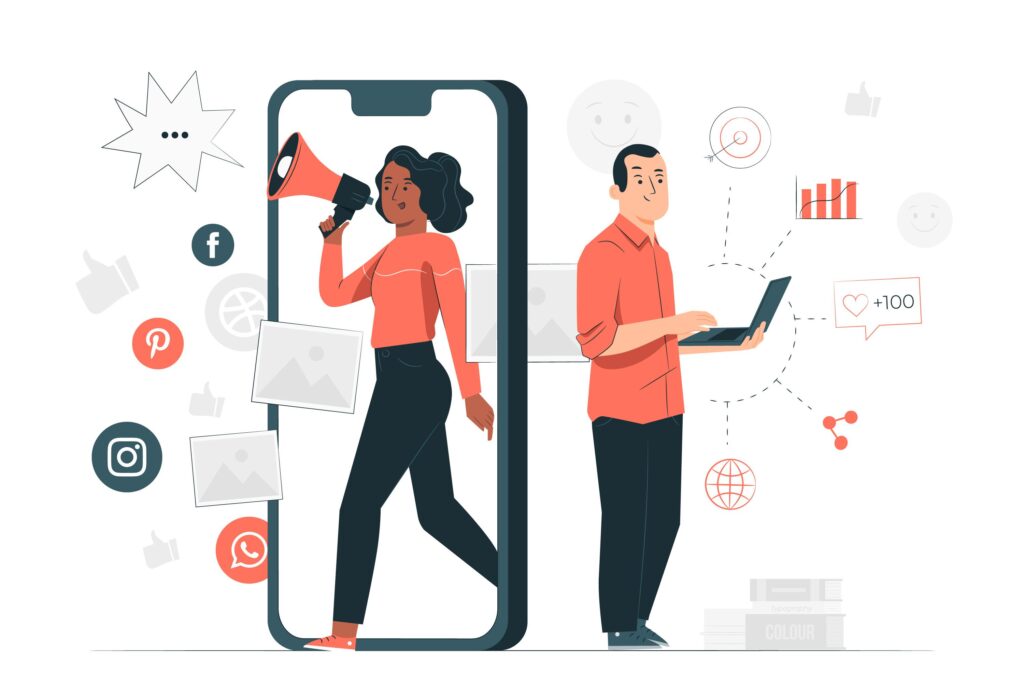
8. Neglecting Customer Care
In the digital age, customer service is not an afterthought – it's a cornerstone of success. Respond promptly to inquiries, address concerns professionally, and go the extra mile to offer positive experiences. Remember, loyal customers are your strongest advocates, spreading the word about your brand organically.
9. Neglecting Paid Ads
While organic reach is crucial, paid advertising can be a powerful catalyst for growth. Platforms like Google Ads and Facebook Ads offer targeted reach, allowing you to connect with specific demographics and interests. However, strategic planning is key for a successful paid advertising campaign.
10. Lack of Measurement and Adaptation
The digital world is constantly evolving, and what works today might not work tomorrow. Regularly track your campaign performance, identify what's working and what's not, and be willing to adapt your strategies based on data-driven insights. Continuous experimentation and improvement are essential for staying ahead of the curve and achieving sustainable success.
Avoiding these common digital marketing mistakes can pave the way for a robust and rewarding digital marketing journey. But navigating the complex online landscape can be challenging, and seeking expert guidance can make all the difference. That's where Webchirpy comes in.
Webchirpy is a digital marketing agency that empowers businesses to thrive in the digital age. Whether it's developing a targeted content strategy, optimizing your website for search engines, or running paid advertising campaigns, We have the tools and knowledge to propel your brand to new heights.
Contact us today and let's embark on your digital marketing journey together!

A website is your virtual storefront, a platform to showcase your brand, and a gateway to connect with potential customers.…
A website is your virtual storefront, a platform to showcase your brand, and a gateway to connect with potential customers. But before you unleash your digital masterpiece onto the world, it's crucial to avoid the website development mistakes that can cripple your online presence. Let's see the do-nots of website development, ensuring your online journey is smooth sailing.
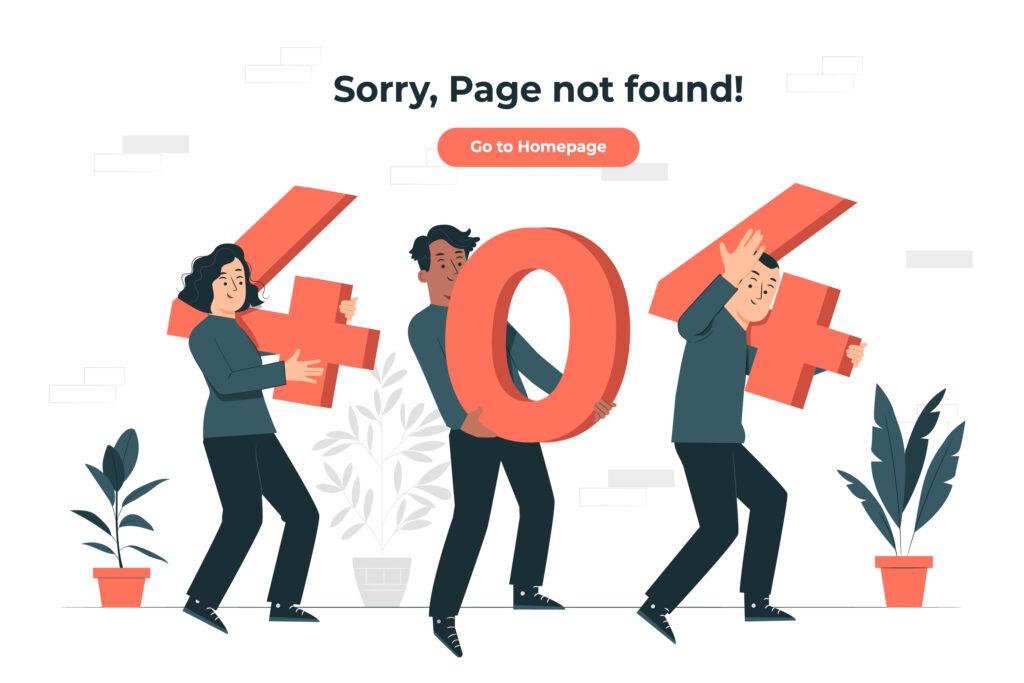
1. Ignoring User Experience (UX)
Neglecting UX is like building a maze without an exit. Confusing navigation, cluttered layouts, and non-intuitive interfaces will leave visitors frustrated and clicking away. Prioritize clarity and ease of use. Remember, a happy user is a loyal customer.
2. Sacrificing Responsiveness
Gone are the days of desktop-only websites. Ignoring mobile responsiveness will lock out half your audience. Ensure your website adapts seamlessly across devices, from smartphones to tablets to desktops. Responsive design is not just a trend it's a necessity.
3. Content Catastrophe
Thin, irrelevant, or poorly written content will send visitors fleeing faster than a cheetah on Red Bull. Invest in high-quality, engaging content that informs, educates, and entertains your target audience. SEO optimization is also key, ensuring your website ranks high in search engine results.
4. Image Overload
While visuals can be powerful, overdoing it with images can weigh down your website, impacting loading times and user experience. Use high-quality, relevant images sparingly, and optimize them for fast loading. Remember, less is often more when it comes to visuals.
5. Call to Action (CTA) Calamity
A clear and compelling CTA is like a lighthouse guiding visitors toward your desired action, whether subscribing to your newsletter or making a purchase. Weak or absent CTAs leave users confused and disengaged. Make your CTAs prominent, actionable, and irresistible.
6. Security Slip-Ups
In today's digital landscape, security is paramount. Ignoring website security is like leaving your front door wide open. Implement robust security measures, including strong passwords, encryption, and regular updates, to protect your website and your visitors' data.
7. Content Management Conundrum
A website needs to be dynamic and adaptable. Choosing the wrong content management system (CMS) can lead to frustration and wasted time. Research and choose a user-friendly CMS that empowers you to easily update and manage your website content.

8. Skipping on Analytics
Failing to track your website's performance is like driving blindfolded. Utilize website analytics tools to understand your visitors' behavior, identify areas for improvement, and optimize your website for success.
9. Ignoring Accessibility
A website that excludes users with disabilities is not just unethical; it's also a missed opportunity. Follow accessibility best practices to ensure everyone can access and enjoy your website.
10. Going Solo
Consider partnering with a web development agency like Webchirpy. With our expertise in design, development, and marketing, we can help you avoid these mistakes and build a website that truly shines.
Webchirpy is not just a web development agency; it's your digital partner. Our team of experienced professionals can handle everything from concept to launch, ensuring your website is not just functional but beautiful, engaging, and optimized for success
So, before you embark on your website development journey, remember these crucial do-nots. By avoiding these website development mistakes and partnering with the right experts you can build a website that stands out from the crowd and propels your online presence to new heights.
Let Webchirpy be your guide on this exciting digital adventure.

A strong brand is the cornerstone of any successful business. It’s your identity, your voice, and your promise to your…
A strong brand is the cornerstone of any successful business. It's your identity, your voice, and your promise to your customers. But building a powerful brand is no easy feat. Many businesses fall victim to common branding mistakes that can hinder their growth and impact. Today, we'll dive into the most frequent missteps, explore how to avoid them, and ultimately, maximize the impact of your brand.

Identifying the Brand Pitfalls
Before we chart a course towards branding success, let's first understand the potential pitfalls lurking in the shadows. These include:
- Lack of Clarity: A brand without a clear purpose, target audience, or value proposition is like a ship lost at sea. Wandering aimlessly without a defined direction will only lead to confusion and disconnect from your customers.
- Inconsistent Messaging: Mixed messages across platforms and touchpoints create dissonance and erode trust. Ensure your brand voice remains consistent across all channels, from your website to your social media presence.
- Ignoring Trends: The marketing landscape is constantly evolving. Clinging to outdated branding strategies will leave you lagging behind competitors who are embracing new trends and technologies.
- Neglecting Customer Feedback: Your customers are your most valuable asset. Ignoring their feedback and failing to adapt to their changing needs will ultimately lead to their disengagement.
- Underestimating Competition: Analyzing your competitors' strengths and weaknesses is crucial to differentiate your brand and carve out a unique space in the market.

Avoiding the Branding Blunders
Now that we've identified the common pitfalls, let's equip ourselves with the tools to navigate them successfully:
- Define Your Brand DNA: Start by establishing your brand's core values, mission, and target audience. This foundation will guide every branding decision you make, ensuring consistency and clarity.
- Craft a Compelling Brand Story: A captivating narrative that resonates with your audience will draw them in and build emotional connections. Don't just sell products tell your brand's story and purpose.
- Embrace Visual Identity: Your logo, colors, fonts, and overall visual aesthetic are critical elements of your brand identity. Invest in creating a professional and memorable visual language that reflects your brand's essence.
- Be Omnichannel: In today's digital world, customers expect a seamless experience across all touchpoints. Ensure your brand message and presence are consistent and engaging on your website, social media platforms, physical stores, and any other channels you utilize.
- Cultivate Brand Advocacy: Happy customers are your best brand ambassadors. Encourage customer engagement, build relationships, and incentivize them to share their positive experiences with others.
Webchirpy: Your Branding Ally
Building a strong brand requires dedication, skill, and the right tools. This is where Webchirpy comes in. We offer a comprehensive suite of branding services, from crafting compelling narratives and crafting visual identities to managing social media and building brand advocacy. Our team of experienced professionals is passionate about helping businesses like yours achieve their branding goals.
Whether you're just starting or looking to revitalize your existing brand, Webchirpy can be your trusted partner in this journey. Let us help you avoid common branding mistakes, maximize your brand impact, and achieve lasting success.
Get in touch today and let Webchirpy be your wingman on the path to branding excellence!

The social media landscape is a marketplace, where brands vie for attention amidst a constant stream of content. In this…
The social media landscape is a marketplace, where brands vie for attention amidst a constant stream of content. In this digital cacophony, measuring success requires strategic focus. Forget vanity metrics like likes and shares - true insights lie in metrics that reveal the deeper impact of your social media endeavors. Let's explore five key metrics that truly matter in social media marketing.
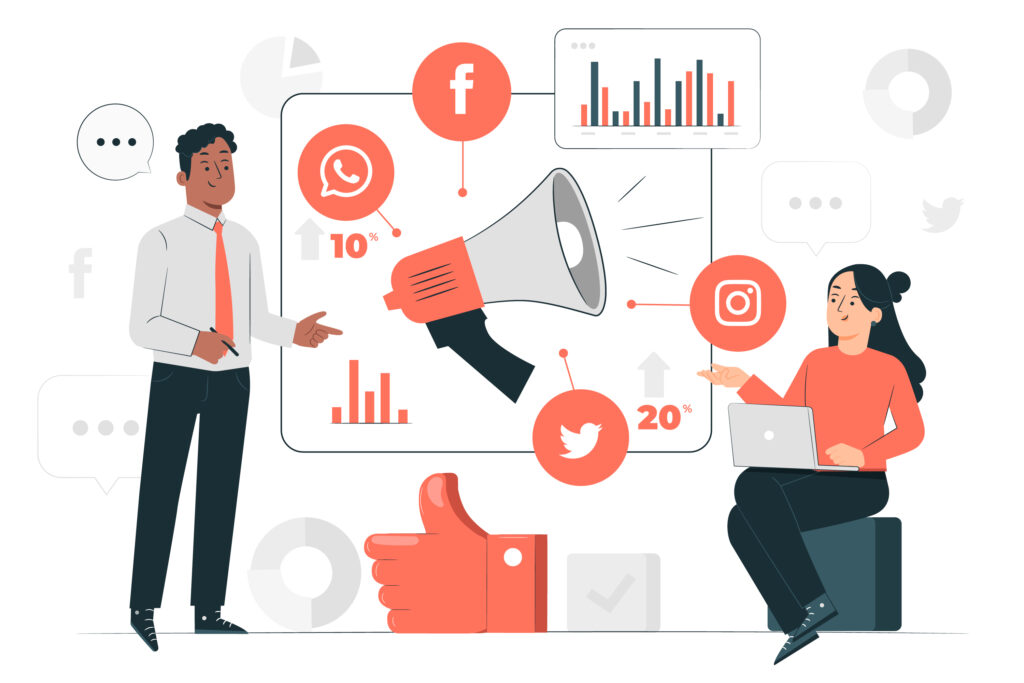
1. Engagement: Beyond Fleeting Interactions
Likes and shares are nice, but true engagement goes beyond fleeting interactions. Think comments, direct messages, replies to polls, and mentions. These metrics shed light on how your audience resonates with your content. A post with high engagement sparks conversations, builds communities, and fosters brand loyalty. It's not just about getting a reaction; it's about creating a connection.
2. Conversions: Turning Attention into Action
Social media isn't just about building buzz; it's about driving conversions. Track how your social media presence translates into leads, sales, or website visits. Measure click-through rates (CTR) on links and conversions from social media ads. Remember, social media is a powerful tool for nurturing leads and guiding them toward the bottom of the funnel.
3. Audience Insights: Knowing Your Tribe
Understanding your audience is paramount. Social media platforms offer valuable demographic and interest insights, revealing who's engaging with your content. Use this data to tailor your messaging and target the right groups. Imagine crafting content that resonates deeply with your ideal customer - engagement and conversions naturally follow.
4. Reach and Impressions: Spreading the Word
Impressions and reach quantify how many people see your content. Reach tells you the number of unique users who encountered your post, while impressions count how many times it was displayed (even to the same user). While high reach and impressions are desirable, remember quality over quantity. Focus on reaching the right audience with engaging content, and conversions will follow organically.

5. Click-Through Rate (CTR): Measuring Content Effectiveness
CTR measures the percentage of people who click on your links after seeing your post. It's a critical metric for gauging the effectiveness of your content and understanding which posts are driving traffic to your website or landing pages. A high CTR indicates that your content is not only resonating with your audience but also compelling them to take action.
Conclusion: It's All About the Big Picture
Social media marketing success lies in focusing on the right metrics. Prioritize engagement, conversions, audience insights, reach, and remember, it's all about the big picture. With thoughtful analysis and strategic action, your social media presence can blossom into a powerful engine for brand growth and customer engagement. By understanding these key metrics and using them to inform your social media strategy, you can cut through the noise and achieve real results.
Bonus Tip
While understanding key metrics is crucial, translating them into impactful results can be a complex task. Social media marketing services like those offered by Webchirpy can bridge this gap, acting as your expert partner in navigating the ever-evolving digital landscape.
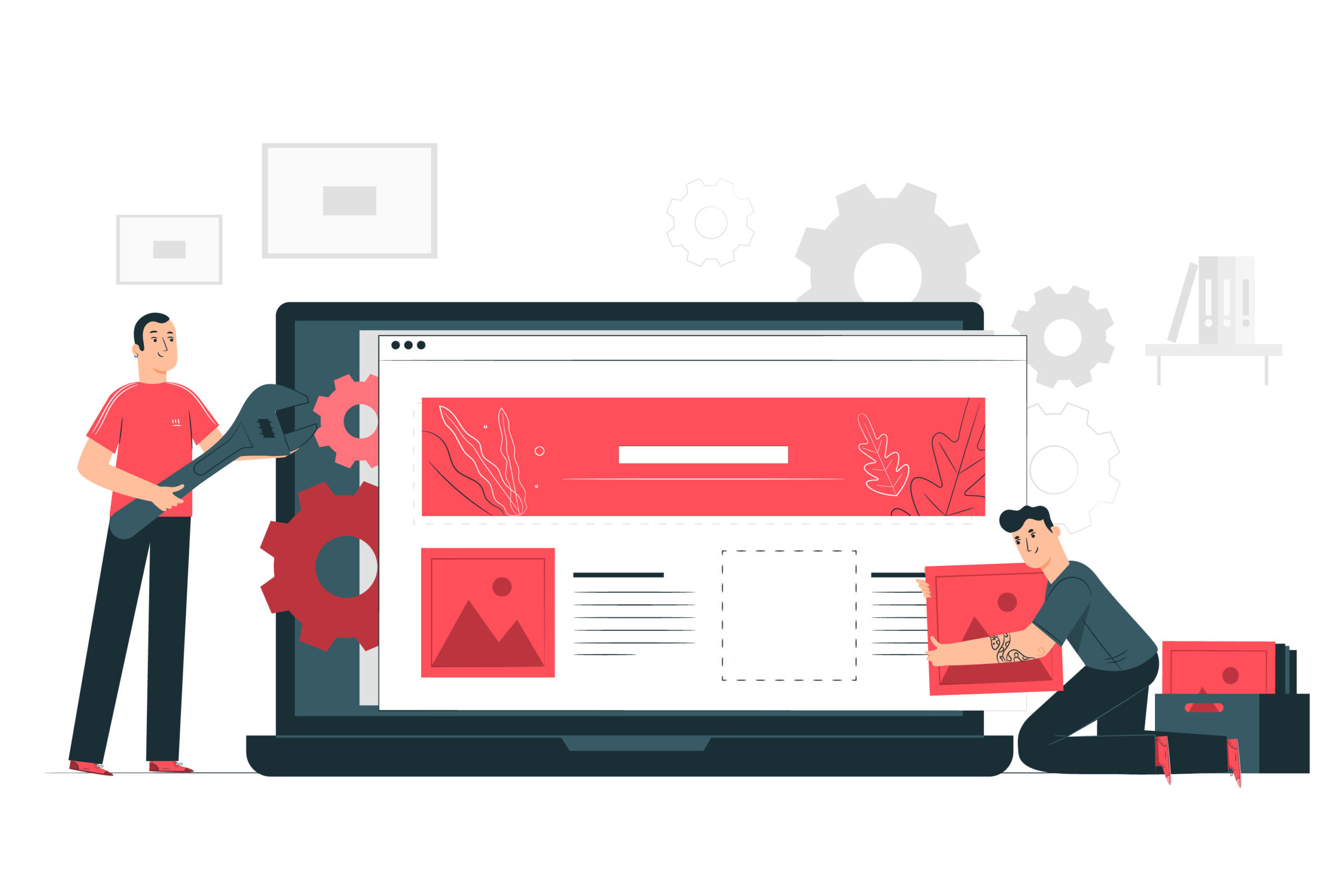
The website is your virtual storefront and it must reflect your brand’s essence, resonate with your target audience, and drive…
The website is your virtual storefront and it must reflect your brand's essence, resonate with your target audience, and drive desired conversions. But how do you know if your website is still fulfilling its potential, or if it's time for a website revamp?
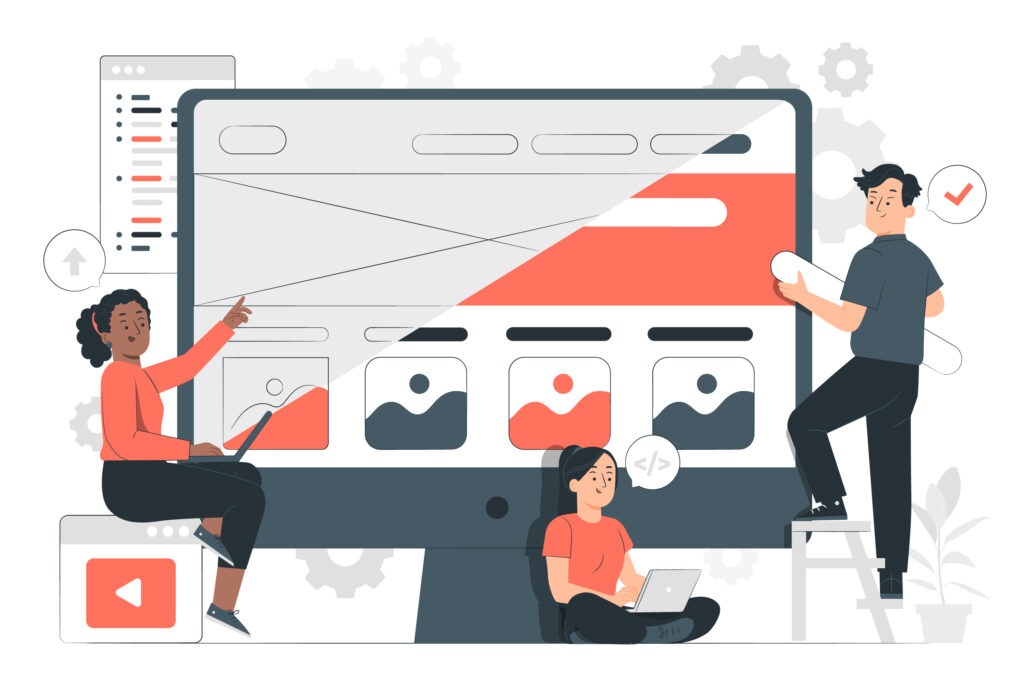
- Visually Outdated: Does your website look like a relic of the dial-up era? Grainy images, clunky layouts, and outdated design trends can create a negative first impression and deter potential customers. Remember, a modern, visually appealing website conveys professionalism and trustworthiness.
- Mobile Malaise: Mobile devices reign supreme in today's digital world. If your website isn't responsive, meaning it doesn't adapt seamlessly to different screen sizes, you're alienating a significant portion of your audience. A mobile-friendly website is not only essential for user experience but also crucial for SEO (search engine optimization) ranking.
- Navigation Nightmares: A confusing website is a lost customer. If navigating your website feels like navigating a maze, it's time for a revamp. A clear, intuitive navigation structure with logical menus and easily accessible information is key to keeping visitors engaged and converting them into leads or customers.
- Content Cobwebs: Dusty, outdated content screams stagnation and lack of engagement. Regularly updating your website with fresh, relevant content, including blog posts, articles, and case studies, demonstrates your expertise, attracts organic traffic, and improves your SEO.
- Less Conversion: If your website is a beautiful masterpiece but fails to convert visitors into customers, it's not fulfilling its purpose. Analyze your website's analytics to identify conversion roadblocks. Is it a clunky checkout process, unclear calls to action, or a lack of trust signals? Addressing these issues can dramatically increase your website's ROI (return on investment).
What is Revamping a Website?
Revamping your website goes beyond a simple cosmetic makeover. It's a comprehensive process that encompasses:
- Strategic planning: Defining your goals, target audience, and desired user experience.
- Design overhaul: Creating a modern, visually appealing, and user-friendly interface.
- Content refresh: Updating information, crafting compelling content, and optimizing for SEO.
- Technical optimization: Ensuring website speed, security, and mobile responsiveness.
- Analytics integration: Tracking website performance and making data-driven decisions for continuous improvement
How Do I Modernise My Website?
Modernization is an ongoing process, not a one-time fix. Here are some steps to keep your website fresh and relevant:
- Stay informed: Track web design trends, user interface (UI) best practices, and SEO guidelines.
- Monitor performance: Regularly analyze your website's analytics to identify areas for improvement.
- Embrace feedback: Solicit user feedback and incorporate actionable suggestions.
- Content is king: Continuously create high-quality, engaging content relevant to your audience.
- Partner with the pros: Consider collaborating with experienced website development and revamping services providers like Webchirpy
Why You Should Revamp Your Website
The benefits of a well-designed, modern website are numerous:
- Enhanced user experience: A user-friendly website keeps visitors engaged and coming back for more.
- Improved SEO: A modern website optimized for search engines increases your online visibility and attracts organic traffic.
- Boosted brand image: A professional website reinforces your brand identity and builds trust with potential customers.
- Increased conversions: A well-optimized website with clear calls to action drives leads, sales, and ultimately, business growth.
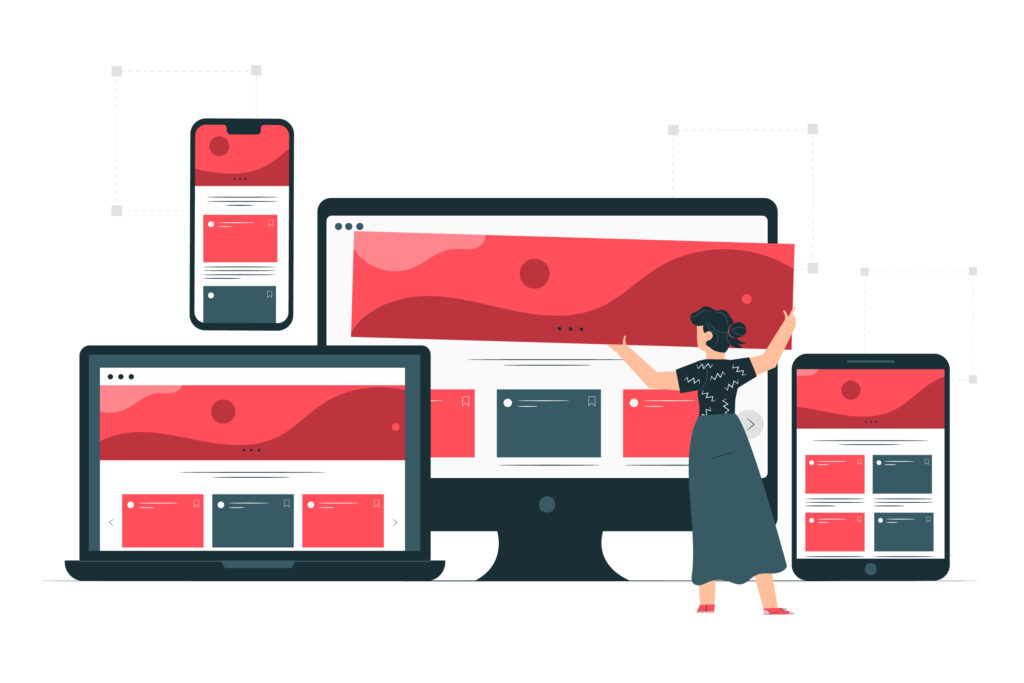
Webchirpy: Your Website Revamp Partner
Revamping your website can seem daunting, but you don't have to do it alone. Webchirpy, a leading website development and revamping service provider, offers comprehensive solutions tailored to your specific needs. Our team of experienced designers and developers will work with you to create a website that's not only visually stunning but also strategically optimized for success.
Don't let your website become a digital ghost town. By recognizing the signs of a needed revamp, taking the necessary steps to modernize, and partnering with the right experts like Webchirpy, you can transform your website into a powerful engine for growth and success.

In the digital age, your website is no longer just an online brochure; it’s your virtual storefront, your brand ambassador,…
In the digital age, your website is no longer just an online brochure; it's your virtual storefront, your brand ambassador, and your lead generation engine. A well-crafted website can be a powerful investment, propelling your business to new heights and generating a tangible return on your digital dollars. But the question remains: how much can a good website earn?
The answer, like most things in business, is multifaceted. While there's no magic formula guaranteeing six-figure windfalls, a strategically designed and optimized website can unlock a revenue stream. Let's dive into the world of website profitability, exploring how these digital havens can transform into self-sustaining ecosystems.

Unveiling the Profitability Puzzle
Before diving into earnings figures, it's crucial to understand the various ways a website earn.
- Direct Sales: If you offer products or services, your website becomes your online marketplace. A seamless user experience, coupled with compelling marketing strategies can drive sales and generate direct revenue.
- Lead Generation: Capture valuable leads through strategically placed forms and calls to action. These leads can then be nurtured into paying customers, transforming your website into a lead magnet.
- Affiliate Marketing: Partner with other brands and promote their products on your website. Earn commissions for every purchase made through your unique affiliate links.
- Advertising Revenue: Display banner ads, sponsored content, or even sell ad space to relevant businesses. This can be an option for websites with high traffic volumes.
- Subscription Services: Offer exclusive content, memberships, or paid online courses. This model is particularly effective for websites with a loyal and engaged audience.
Beyond the Numbers: The Power of a Great Website
While specific earnings figures vary depending on your industry, target audience, and chosen monetization strategies, the benefits of a great website extend far beyond mere financial gain. Here are some additional advantages:
- Brand Building: A well-designed website reinforces your brand identity, establishing trust and credibility with your audience.
- Increased Customer Engagement: Interactive features, informative content, and responsive design keep visitors engaged and coming back for more.
- Improved Customer Service: Provide self-service options like FAQs, knowledge bases, and chatbots to efficiently address customer queries and build loyalty.
- Market Reach: Your website transcends geographical limitations, allowing you to reach a global audience and expand your market reach.
Building a Profitable Website
Now that we've explored the potential of a great website, let's look at some key steps to turn your digital space into a revenue stream.
- Invest in Professional Development: Services like Webchirpy's website development service can help you craft a website that's not only visually appealing but also optimized for conversion and search engine visibility.
- Prioritize User Experience: Make navigation intuitive, content engaging, and website loading times fast. A positive user experience keeps visitors coming back for more.
- Content is King: Create high-quality content that resonates with your target audience and addresses their pain points. Regularly update your content to maintain freshness and engagement.
- Embrace Analytics: Track your website's performance through analytics tools. This data will help you identify areas for improvement and optimize your monetization strategies.
- Market Your Masterpiece: Don't let your website languish in obscurity. Leverage social media, email marketing, and other online channels to drive traffic and generate leads.

The Verdict: A Rewarding Investment:
While the exact amount a website can earn varies, the potential for a significant return on investment is undeniable. By investing in a well-designed, strategically optimized website, you're not just building a digital storefront; you're laying the foundation for a sustainable, profitable business ecosystem. Remember, a great website is a living, breathing entity that requires constant nurturing and optimization. By dedicating time and effort to your online presence, you can unlock its true potential and watch your website transform into a self-sustaining, revenue-generating powerhouse.

In today’s hyper-connected world, where brands need attention in a crowded digital marketplace, simply having a logo and tagline isn’t…
In today's hyper-connected world, where brands need attention in a crowded digital marketplace, simply having a logo and tagline isn't enough. Building a successful brand requires a strategic approach, a roadmap that guides you beyond the basics and into a future of lasting impact. This is where the concept of building brand strategy comes in.

But what exactly is a long-term brand-building strategy? It's not just a one-off campaign or a fleeting trend. A deliberate, multi-faceted approach that anchors your brand identity, aligns it with your core values and propels it toward sustained growth. It's a journey, not a destination, and it demands consistent effort and a clear understanding of your target audience, your competitive landscape, and your own unique brand essence.
So, how do you build such a strategy? By considering these four key pillars:
1. Defining Your Brand Identity:
- Who are you? What makes you different? What values do you stand for? These are the foundational questions that underpin your brand identity. Through market research, competitor analysis, and internal discussions, you need to arrive at a clear and compelling answer.
- Articulate your brand story: This is the narrative that connects with your audience on an emotional level. It's not just about your products or services; it's about the purpose, the passion, and the "why" behind your brand.
- Craft a memorable visual identity: Your logo, color palette, typography, and imagery should all be in sync with your brand story and resonate with your target audience. Think of it as the visual shorthand that instantly evokes your brand's essence.
2. Choosing the Right Branding Strategy:
- There's no one-size-fits-all approach to branding, and the most effective strategy will depend on your specific goals and target audience. However, four main types of branding strategies can guide your path.
- Differentiation: Stand out from the crowd by highlighting your unique value proposition and what sets you apart from the competition.
- Positioning: Define your place within the market and the minds of your audience. Who are you competing with? What niche do you fill?
- Relationship building: Foster trust and loyalty by creating a strong emotional connection with your audience. This involves engaging with them authentically and building a community around your brand.
- Performance: Focus on delivering exceptional customer experiences and exceeding expectations. This builds brand advocates who spread the word organically.
3. Building a Consistent Brand Voice:
Your brand voice is the personality that shines through in all your communication channels. It's the tone, the style, and the language that you use to interact with your audience. Whether it's playful and informal or professional, ensure your voice is consistent across all touchpoints – website, social media, marketing materials, and even customer service interactions.

4. Measuring and Adapting:
Building a successful brand is an ongoing process, Regularly track your brand metrics, analyze customer feedback, and measure the effectiveness of your campaigns. This data will inform your future decisions and help you refine your strategy to stay relevant and competitive.
Remember, building a strong brand is not just about aesthetics or marketing. It's about establishing trust, fostering loyalty, and creating a lasting connection with your audience. It's about becoming a beacon of value and meaning in a world increasingly saturated with noise.
If you're ready to embark on your brand-building journey, consider partnering with a professional branding agency like Webchirpy. Their team of experts can help you define your brand identity, develop a winning strategy, and create a visual language that resonates with your target audience.
By investing in a long-term brand-building strategy, you're not just building a brand; you're building a legacy. You're creating a lasting impression that will propel your business forward for years to come.
This is just the beginning of your brand's story. Are you ready to write the next chapter?

Navigating the vibrant world of digital marketing can feel daunting for any business owner. With several agencies, consultants, and services…
Navigating the vibrant world of digital marketing can feel daunting for any business owner. With several agencies, consultants, and services all vying for your attention, making the right choice can seem like finding a needle in a haystack. Worry not! This comprehensive guide will equip you with the knowledge to discover the perfect digital marketing service that will catapult your business to new heights.

1. Charting Your Course: Defining Your Digital Goals
Before embarking on your digital odyssey, it's crucial to chart your course by defining your goals. What do you hope to achieve through digital marketing? Do you dream of brand awareness, lead generation, increased sales, or a loyal online community? Pinpointing your objectives will serve as a compass, guiding you toward the services and expertise that align with your desired destination.
2. Exploring the Digital Landscape: Digital Marketing Service
Think of digital marketing as your trusty map and compass, helping you navigate the online world to connect with your ideal customers. Your toolkit includes various channels, each with its strengths:
- Search Engine Optimization (SEO): This is the art of making your website the star of search engine results pages (SERPs), drawing organic traffic and leads.
- Search Engine Marketing (SEM): Paid advertising like Google Ads lets you target specific keywords and boost your visibility online.
- Social Media Marketing: Facebook, Instagram, Twitter, and the like are vibrant marketplaces where you can build brand awareness, engage with your audience, and drive conversions.
- Email Marketing: Nurturing leads and fostering customer loyalty through personalized email campaigns is a powerful tool not to be underestimated.
- Content Marketing: Creating valuable and engaging content like blog posts, videos, and infographics to attract audience.
3. Identifying the Ideal Partner: Finding the right agency
With a firm grasp of your goals and the digital landscape, it's time to embark on the quest for the perfect digital marketing agency. Here are some key elements to consider:
- Expertise and Services: Does the agency offer the specific services you need, from SEO and content creation to social media management and paid advertising?
- Case Studies and Testimonials: A track record of success speaks volumes. Ask for case studies showcasing their ability to deliver results in your industry or niche.
- Cultural Fit and Communication: The agency should feel like an extension of your team. Look for agencies that resonate with your company culture and prioritize clear communication.

Webchirpy: Your Potential Digital Marketing Agency
Webchirpy crafts powerful digital marketing strategies that soar above the competition, driving leads, conversions, and brand loyalty. From social media magic to data-driven insights, Webchirpy helps businesses of all sizes reach new heights.
Ready to unlock your online potential? Contact Webchirpy today and let's get your brand skyrocketing!
4. Investing in Success: Navigating the Pricing Landscape
Digital marketing services come in various packages and pricing structures. It's essential to understand the value each offering brings and find one that aligns with your budget and objectives. Remember, the cheapest option isn't always the best; investing in expertise and proven results can yield an immense long-term return.
5. Cultivating Your Online Garden: Continuous Improvement Tips
Even with the best digital marketing agency, your online presence requires ongoing nurturing. Here are some tips to keep your digital garden thriving:
- Content is King: Regularly create high-quality content that engages your audience and provides value.
- Target the Right Audience: Understand your ideal customer and tailor your messaging accordingly.
- Embrace Data-Driven Decisions: Track your analytics, identify areas for improvement, and adapt your strategies as needed.
- Foster Active Engagement: Respond to comments, answer questions, and build meaningful relationships online.
By following these steps and choosing the right digital marketing agency, you can embark on a transformative journey, propelling your business to new heights of online success. Remember, the digital world is full of opportunities waiting to be unlocked. Seize the day, harness the power of digital marketing, and watch your business blossom!

Ready to unleash the hidden potential of your brand? Buckle up for Branding Tips, revealing powerful strategies to crack the…
Ready to unleash the hidden potential of your brand? Buckle up for Branding Tips, revealing powerful strategies to crack the code of your brand's true identity. Your brand is more than just a logo or tagline. It's the essence of your business, the story you tell, and the emotional connection you forge with your customers. But in today's crowded marketplace, unlocking your brand's true potential can feel like cracking a code.

Every captivating brand has a story – a narrative that weaves together your values, purpose, and the unique impact you bring to the world. Ask yourself: Why does your business exist? What problem do you solve, and why does it matter? Once you have this core narrative, weave it into your messaging, website copy, and even your social media interactions.
These branding tips are your master key to unleash your hidden potential
1. Craft a Compelling Brand Voice:
Your brand voice is your personality. It's the tone you use to connect with your audience, the way you make them laugh, think, and feel. Experiment with different tones and find what resonates with your ideal customer. Is your brand playful and witty? Bold and authoritative? Warm and inviting? Infuse your voice into every touchpoint, from blog posts to customer service emails.
2. Design a Memorable Brand Identity:
Your logo, colors, and fonts are the visual ambassadors of your brand. They should be instantly recognizable, evoke the right emotions, and be consistent across all platforms. Invest in professional design to create a brand identity that reflects your story and voice. Remember, consistency is key! Use your chosen color palette, fonts, and logo design elements across your website, social media profiles, marketing materials, and even your office space.
3. Build Brand Consistency:
Consistency is the glue that binds your branding efforts together. Ensure every touchpoint, from your website design to your employees' interactions with customers, reflects your brand identity. This creates a sense of familiarity and trust, making your brand instantly recognizable and memorable.
4. Engage Your Audience:
Branding isn't a one-way street. It's about building relationships with your customers. Start conversations on social media, share behind-the-scenes glimpses of your team, and actively seek feedback. Show your customers that you value their input and that they're part of your brand story.
5. Measure and Adapt:
Branding is an ongoing journey, not a destination. Track your brand's performance through website analytics, social media engagement metrics, and customer feedback. Use this data to identify what's working and what's not, and adapt your branding strategies accordingly. Remember, the best brands are always evolving and refining their message to stay relevant and resonate with their audience.
Unlock the Full Potential with Webchirpy:
At Webchirpy, we're passionate about helping businesses unlock their branding magic. We offer a comprehensive suite of branding services, from crafting compelling brand stories and designing unforgettable brand identities to developing effective brand communication strategies. We'll partner with you to understand your unique vision and translate it into a brand that attracts, engages, and converts.
Ready to unleash your brand's hidden potential? Contact Webchirpy today and let's get started on building a brand that wows!

In today’s digital age, having a robust online presence is no longer optional – it’s essential. Whether you’re a seasoned…
In today's digital age, having a robust online presence is no longer optional – it's essential. Whether you're a seasoned entrepreneur or a budding freelancer, your website is your digital storefront, your voice to the world, and a powerful tool for attracting customers, building brand awareness, and achieving your business goals. But for those unfamiliar with website development, the process can seem daunting. Fear not! This comprehensive guide will decode the mysteries of web development, equip you with the knowledge to navigate the journey and empower you to build a winning online presence.

Understanding the Code
While you don't need to be a programming whiz to understand website development, familiarizing yourself with the basic languages involved can help you communicate effectively with your developers. HTML acts as the skeleton of your website, providing the structural foundation. CSS is the artist's brush, adding style and color to bring your vision to life. JavaScript then breathes life into your website, injecting interactivity and dynamic elements. These are just the core languages, but understanding their roles will give you a solid foundation.
Three Pillars of Development
When it comes to website development, three main areas intertwine to create a cohesive online experience:
1. Front-End Development: This refers to the visual aspects you see and interact with, like the layout, graphics, and user interface. Think of it as the beautiful facade of your digital home.
2. Back-End Development: This is the hidden engine that powers your website, handling databases, managing data, and ensuring everything runs smoothly behind the scenes. It's the invisible architect making sure your house stands strong.
3. Content Management System (CMS): Platforms like WordPress act as bridges, allowing you to manage your website content without needing to dive into code. Imagine it as the interior decoration toolset, letting you personalize your space with ease.
The Development Journey
Building a website isn't a one-step process, but a well-defined journey with five distinct stages:
1. Planning and Discovery: This involves defining your goals, target audience, and website functionality. Think of it as laying the groundwork for your dream home.
2. Design and Prototyping: Here, your vision takes shape. Designers craft mockups and user flows, ensuring your website is not only aesthetically pleasing but also intuitive and user-friendly.
3. Development and Coding: This is where the magic happens! Developers bring your designs to life, writing code and building the functionalities that make your website tick.
4. Testing and Quality Assurance: Before launch, rigorous testing ensures your website is bug-free and functions flawlessly across different devices and browsers.
5. Launch and Maintenance: With a triumphant fanfare, your website goes live! But the journey doesn't end there. Regular updates, maintenance, and SEO optimization are crucial to keep your website flourishing.

Preparing for Success
Before embarking on your website development journey, there are a few key steps to ensure a smooth and successful process
1. Define your goals: What do you want your website to achieve? Generate leads, increase sales, or build brand awareness? Having clear goals will guide your development decisions.
2. Know your audience: Who are you trying to reach? Understanding your target demographics will inform your design, content, and overall user experience.
3. Research and gather inspiration: Browse successful websites in your industry and identify elements you want to emulate. Create a mood board to visualize your desired aesthetic.
4. Set a budget: Website development can range from DIY budget-friendly options to comprehensive professional services. Determine your budget and find a solution that fits your needs.
5. Choose the right tools and partners: Whether you choose a website builder, hire freelance developers, or partner with a full-service agency, research your options and select a team that aligns with your vision and budget.
By understanding the "code" of website development, familiarizing yourself with the different types and stages, and taking the time to prepare, you can navigate the journey with confidence. Remember, your website is an investment in your future, and with the right tools and knowledge, you can build a winning online presence that drives success.
Want expert help in crafting your online masterpiece? Webchirpy offers comprehensive website development services tailored to your unique needs and goals. With our focus on ROI-driven results, custom designs, and competitive pricing, we can help you build a website that not only looks stunning but also delivers real business impact.

In today’s digital age, simply having a great product or service isn’t enough. To thrive, businesses need to reach their…
In today's digital age, simply having a great product or service isn't enough. To thrive, businesses need to reach their target audience effectively and build strong relationships with them. That's where digital marketing comes in - a powerful set of tools and strategies that can transform your business, attracting more customers and boosting your sales like never before.

So, what exactly can digital marketing do for your business?
Expand your reach
Traditional marketing methods often have limitations in terms of geographical reach. Digital marketing, on the other hand, transcends borders and lets you connect with potential customers anywhere in the world. Imagine tapping into a global audience for your local bakery or attracting clients across countries for your consulting services.
Target the right audience
Forget wasted advertising dollars. Digital marketing platforms allow you to laser-focus your efforts on precisely the people most likely to be interested in your offerings. Using demographics, interests, and online behavior, you can create targeted campaigns that resonate deeply with your ideal customers, significantly increasing the chances of conversions.
Build brand awareness
From social media engagement to search engine optimization (SEO), digital marketing helps you build brand recognition and establish yourself as a thought leader in your industry. This consistent online presence fosters trust and credibility, making your business stand out from the competition and attracting customers who actively seek you out.
Enhance customer engagement
Digital marketing isn't just about one-way communication. It opens up a two-way street, allowing you to directly interact with your customers, address their concerns, and build stronger relationships. This fosters loyalty and encourages repeat business, turning one-time buyers into enthusiastic advocates for your brand.
Measure and optimize
Unlike traditional marketing, digital marketing is all about data-driven decisions. Every click, every conversion, every interaction can be tracked and analyzed, providing valuable insights into your campaign performance. With this knowledge, you can continuously refine your strategies, maximizing your return on investment (ROI) and ensuring your marketing efforts are always working towards your goals.

But here's the thing: navigating the complexities of digital marketing can be overwhelming, especially for small businesses. This is where an agency like Webchirpy comes in. We offer a comprehensive suite of digital marketing services tailored to your specific needs and budget.
Develop a winning digital strategy
Our experts will analyze your business, target audience, and industry to create a personalized roadmap for success, leveraging the right mix of channels for maximum impact.
Implement effective campaigns
From crafting compelling social media content to optimizing your website for search engines, we handle every aspect of your campaign, ensuring professional execution and consistent results.
Track and analyze performance
We don't just implement, we measure. Our team provides you with regular reports and insights, allowing you to track your progress, identify areas for improvement, and continuously optimize your campaigns for better results.
The impact of digital marketing on the business world has been nothing short of revolutionary. It has leveled the playing field, allowing small businesses to compete with larger corporations and reach a global audience. Shifted the focus from one-size-fits-all marketing to personalized customer experiences.
By embracing Digital marketing's power and leveraging the expertise of a trusted digital marketing agency like Webchirpy, you can attract more customers, and boost your sales.
Ready to take the leap? Contact Webchirpy today and let our team help you craft a digital marketing strategy.
In the ever-evolving digital landscape, a strong brand is no longer a luxury – it’s a necessity. But with 2024…
In the ever-evolving digital landscape, a strong brand is no longer a luxury – it's a necessity. But with 2024 just around the corner, what does it take to future-proof your brand and stay ahead of the curve? This article dives deep into the key trends and insights shaping the branding landscape, equipping you with the knowledge and tools to build a brand that thrives in the years to come.

1. Embracing the Evolving Customer Journey:
The traditional linear customer journey is fading into the past. Today, customers interact with brands across multiple touchpoints – social media, websites, mobile apps, and physical stores. To succeed, brands must create a seamless and consistent experience across all these channels. This means investing in omnichannel marketing strategies, personalized content, and intuitive user interfaces.
Actionable Tip: Conduct a customer journey audit to identify touchpoints and potential friction points. Develop a plan to address these issues and create a seamless experience across all channels.
2. Hyper-Personalization Takes Center Stage:
Gone are the days of generic marketing messages. In 2024, brands will need to hyper-personalize their communication to resonate with individual customers. This involves leveraging data analytics and AI to understand customer preferences, purchase history, and online behavior. By tailoring content, offers, and recommendations to individual needs, brands can build stronger relationships and drive loyalty.
Actionable Tip: Implement a CRM system and utilize data analytics tools to collect and analyze customer data. Use this information to personalize your marketing campaigns and create targeted content that resonates with specific customer segments.
3. Authenticity and Transparency Reign Supreme:
Consumers are increasingly skeptical of brands that seem inauthentic or shrouded in secrecy. In 2024, transparency and real-world values will be key differentiators. Brands that champion social responsibility, sustainability, and ethical practices will attract and retain customers who value these principles.
Actionable Tip: Conduct a brand audit to identify your core values and how they align with your target audience. Communicate your values clearly and authentically through your brand messaging and actions. Consider partnering with organizations that share your values to further amplify your message.

4. The Rise of the Micro-Influencer:
While celebrity endorsements still hold some sway, the rise of micro-influencers is undeniable. These everyday individuals with engaged social media followings can offer a more relatable and authentic voice for brands. Partnering with micro-influencers who align with your brand values can be a cost-effective way to reach a targeted audience and build trust.
Actionable Tip: Research micro-influencers in your industry who have a strong engagement rate and resonate with your target audience. Develop strategic partnerships with these individuals to create engaging content and promote your brand to their followers.
5. The Power of Storytelling:
In a world saturated with content, brands need to stand out by telling compelling stories. Storytelling helps connect with customers on an emotional level, build brand identity, and create lasting memories. Whether it's through video, social media posts, or customer testimonials, focus on weaving narratives that resonate with your audience and showcase your brand's unique value proposition.
Actionable Tip: Identify your brand's core story and develop ways to share it across different channels. Use storytelling to highlight your values, mission, and the impact you make on real people.
Overall, branding is an essential part of any successful business. By investing in your brand, you can reap a number of benefits, including increased sales, customer loyalty, and employee morale.
Ready to Future-Proof Your Brand?
By embracing these trends and insights, you can build a brand that thrives in the ever-evolving landscape of 2024. Remember, branding is a continuous journey, not a destination. Stay informed, adapt to changing trends, and consistently deliver value to your customers. With dedication and a strategic approach, you can create a brand that stands out from the crowd and secures its place in the future.
And if you're looking for expert guidance on your branding journey, consider exploring the Branding services offered by Webchirpy. Their team of experienced professionals can help you develop a brand identity that resonates with your audience and drives success in the years to come.
Positioning an eLearning brand for a wide range of audiences.
Skill Safari
Skill Safari is an eLearning platform for skill enhancement and training that set out to nurture the skills of young students and Re-Skill professionals in web development and design.
Story telling in a digital way
Ecommerce Development
Web & Mobile Mockups Designs, Wireframe & Prototyping, UI/UX for Web & Mobile Apps, User Onboarding & Journey
Create impact by being
Team
Lorem ipsum dolor sit amet, consectetur adipiscing elit. Ut elit tellus, luctus nec ullamcorper mattis, pulvinar dapibus leo.
Culture
Lorem ipsum dolor sit amet, consectetur adipiscing elit. Ut elit tellus, luctus nec ullamcorper mattis, pulvinar dapibus leo.
Result
Lorem ipsum dolor sit amet, consectetur adipiscing elit. Ut elit tellus, luctus nec ullamcorper mattis, pulvinar dapibus leo.
Energy
Lorem ipsum dolor sit amet, consectetur adipiscing elit. Ut elit tellus, luctus nec ullamcorper mattis, pulvinar dapibus leo.
Creative
Lorem ipsum dolor sit amet, consectetur adipiscing elit. Ut elit tellus, luctus nec ullamcorper mattis, pulvinar dapibus leo.
Support
Lorem ipsum dolor sit amet, consectetur adipiscing elit. Ut elit tellus, luctus nec ullamcorper mattis, pulvinar dapibus leo.


 From Coimbatore
From Coimbatore